Read the Helpsimus annual report for 2021!
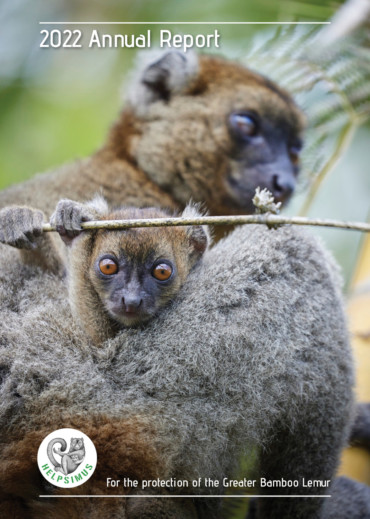
Our environmental education programme took a new turn in 2022 with the creation of the Simus School, our home for environmental education.
The school, which was built in Sahofika, also includes a kitchen and a refectory to accommodate children from all our partner villages and to organise activities over several days.
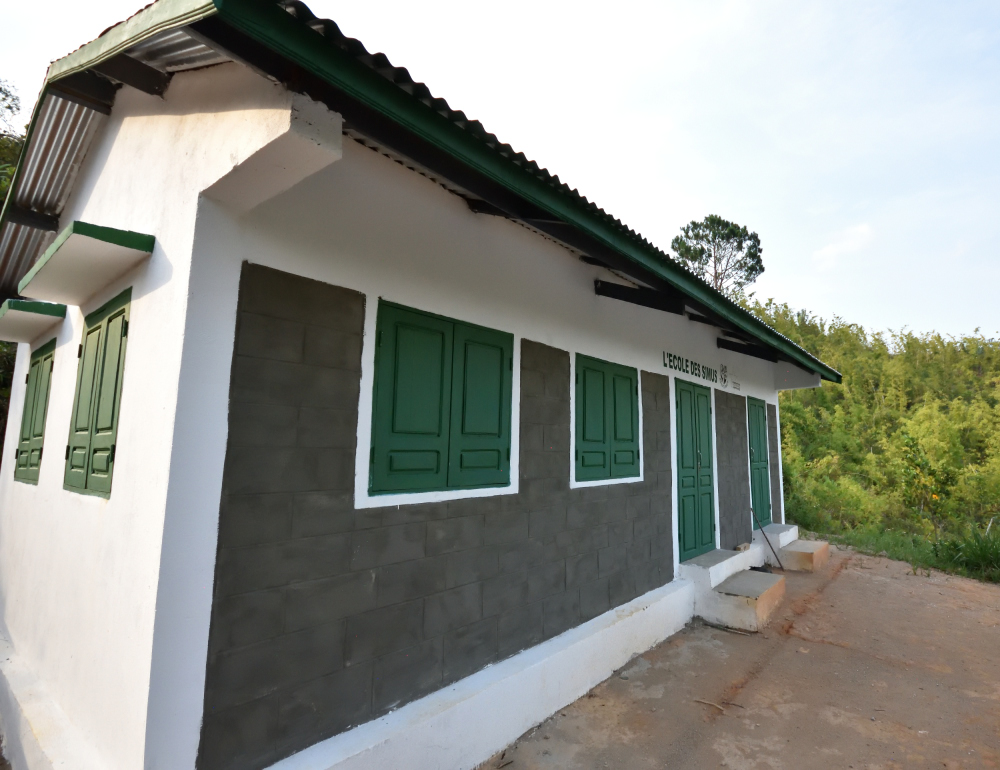
The Simus School © D. Roullet
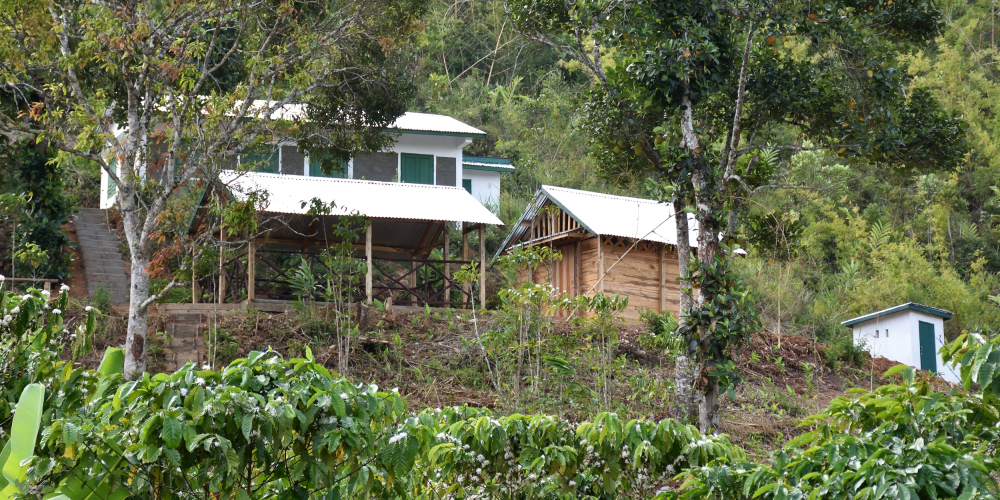
In front of the Simus School, the refectory and the kitchen © D. Roullet
The recruitment of a new educator, Laurent, as well as the decision to have our environmental education programme supervised by our partner Impact Madagascar, also allows us to organise more activities for the children.
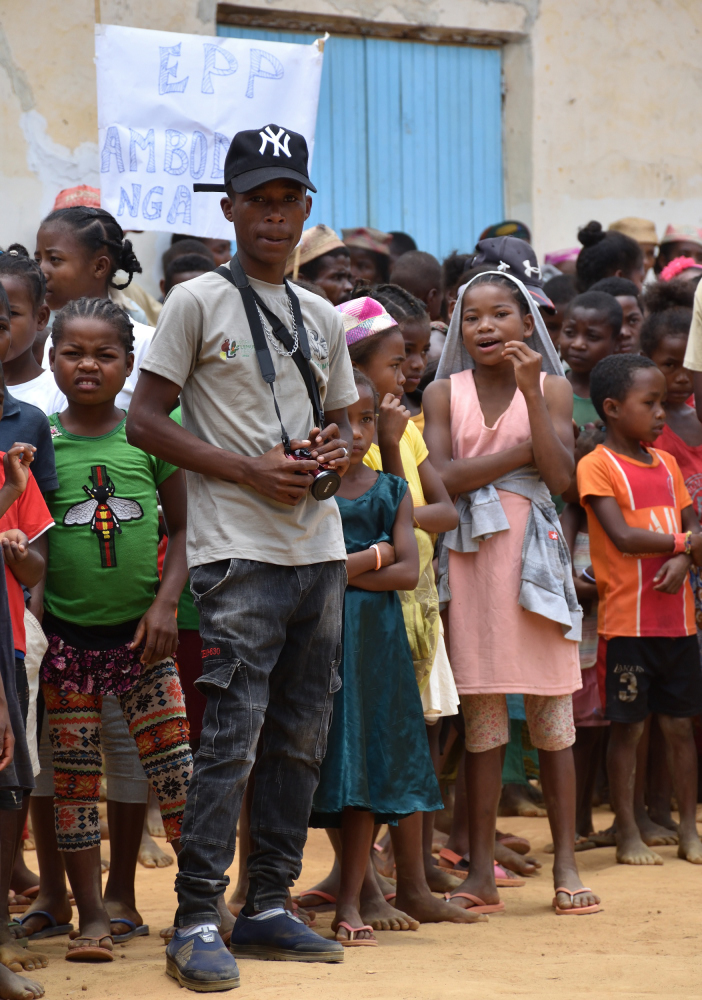
Laurent © D. Roullet
Last year, we conducted 65 educational workshops, involving 1,866 children.
We have introduced new activities, in particular a workshop entitled « I take care of the forest ». This workshop aims to make children aware of the importance of forests by teaching them to look after the trees they have planted near their school.
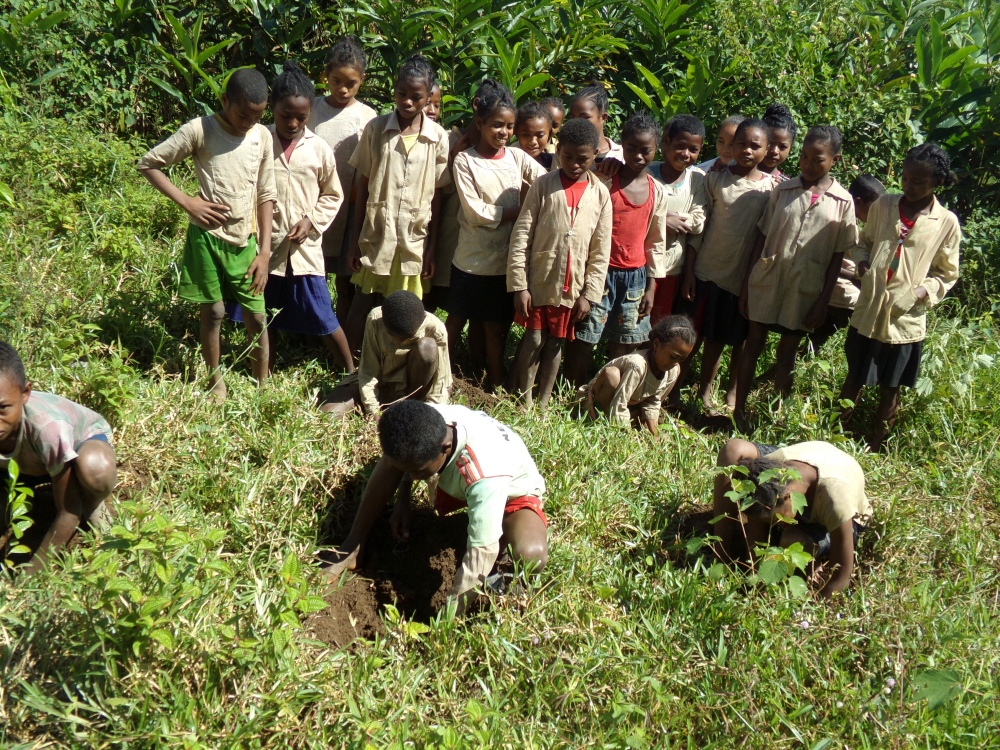
The workshop « I take care of the forest » © Impact Madagascar
In addition, during the summer holidays, we organised our first two green classes in the Ranomafana National Park, which brought together around thirty children. They were amazed by this place that they had never had the opportunity to visit. They were able to observe red-bellied lemurs, Edwards’ sifakas, red-fronted lemurs, but also many endemic plant species. They discovered the different roles of the forest and the interdependence of living beings in this ecosystem.
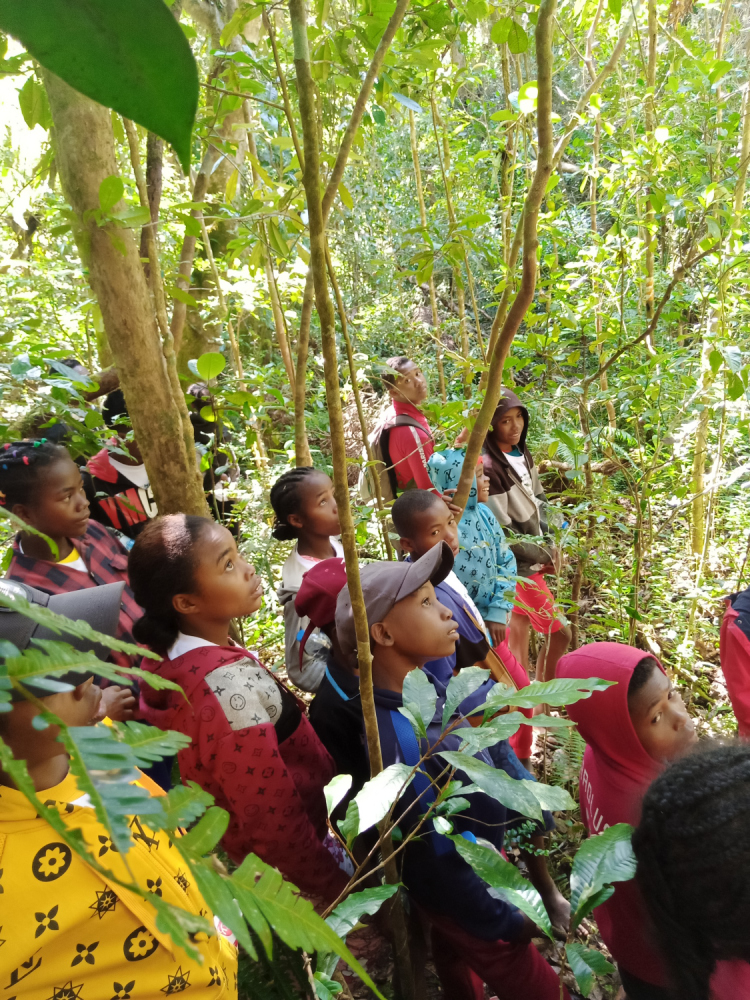
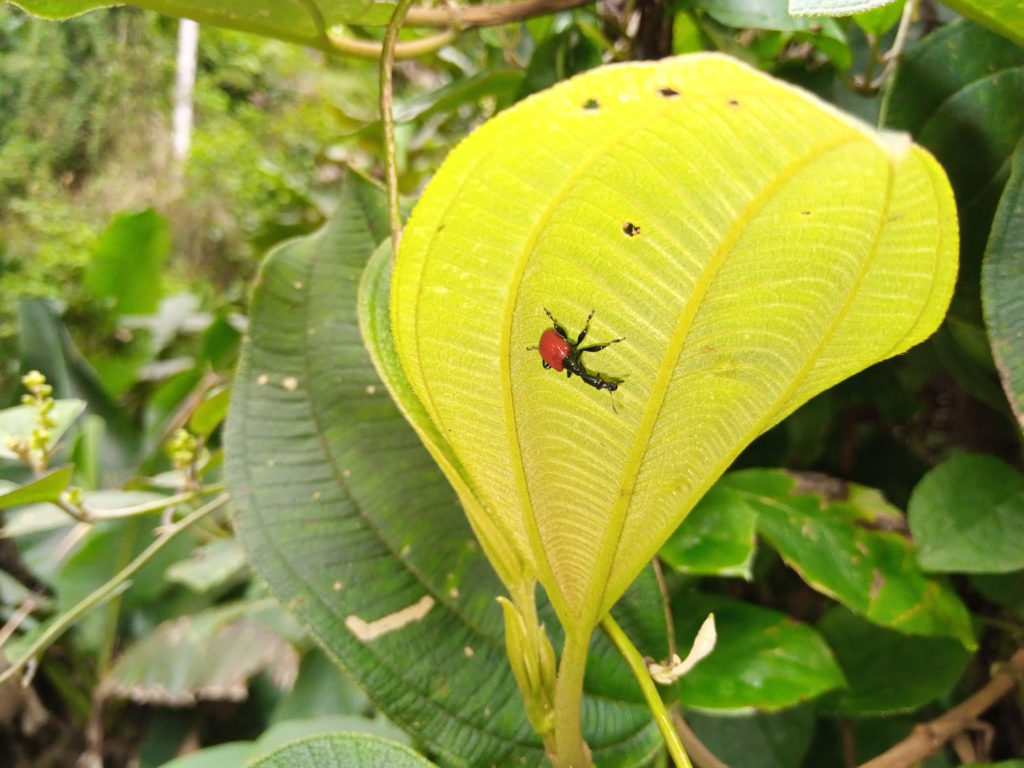
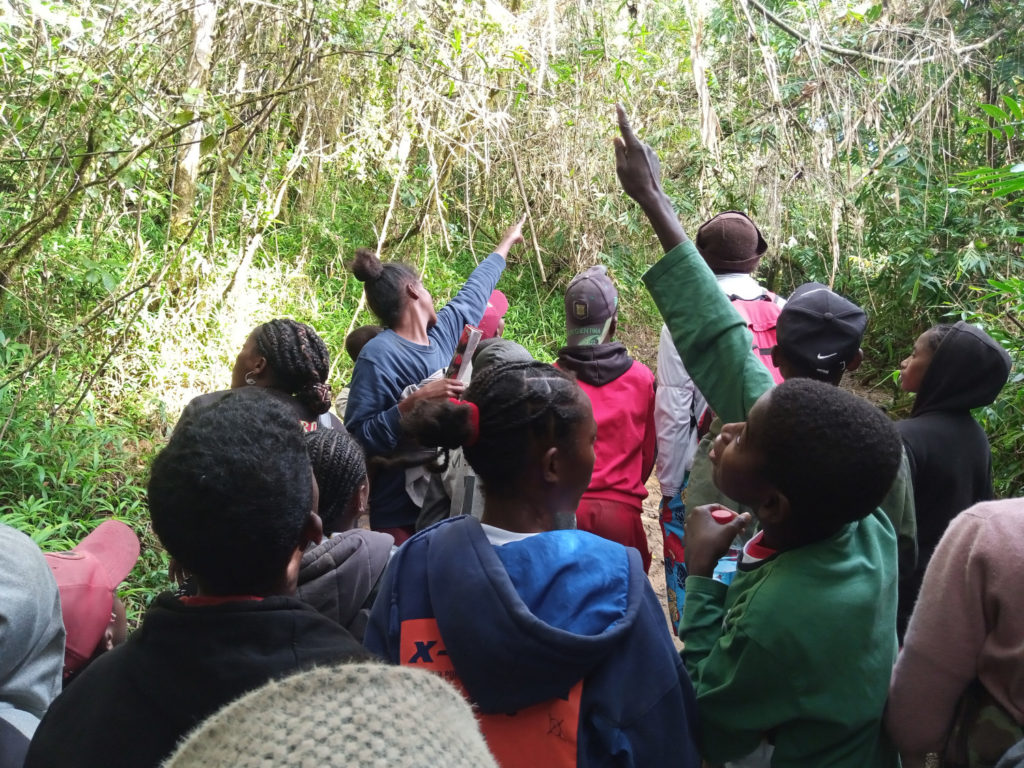
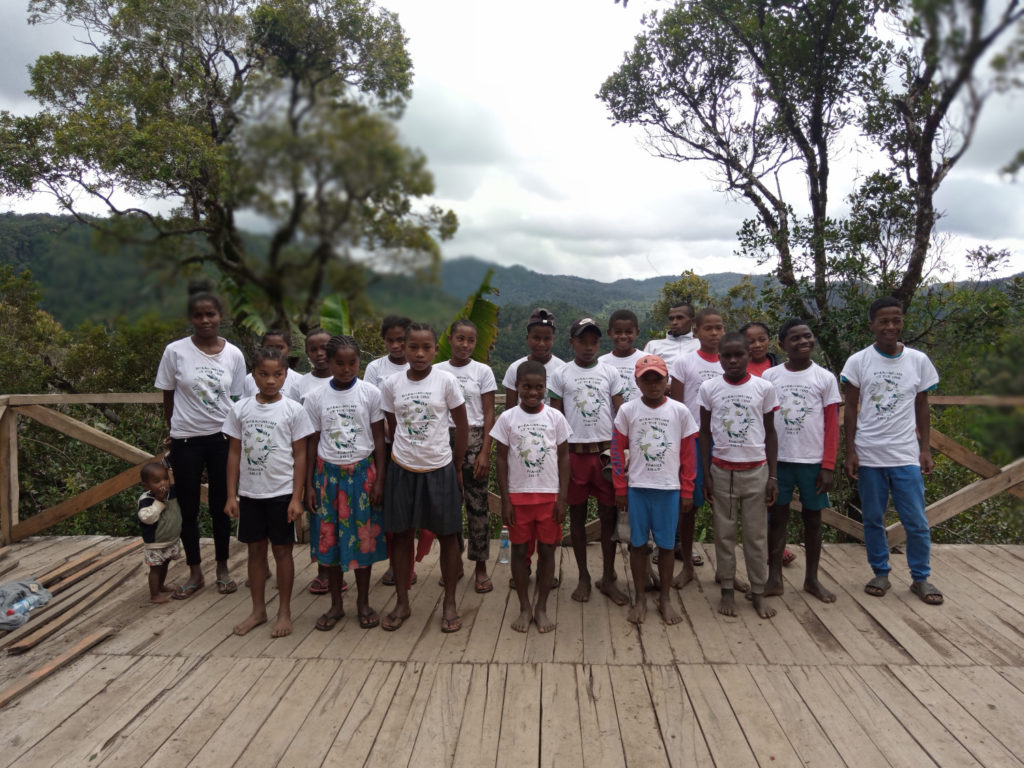
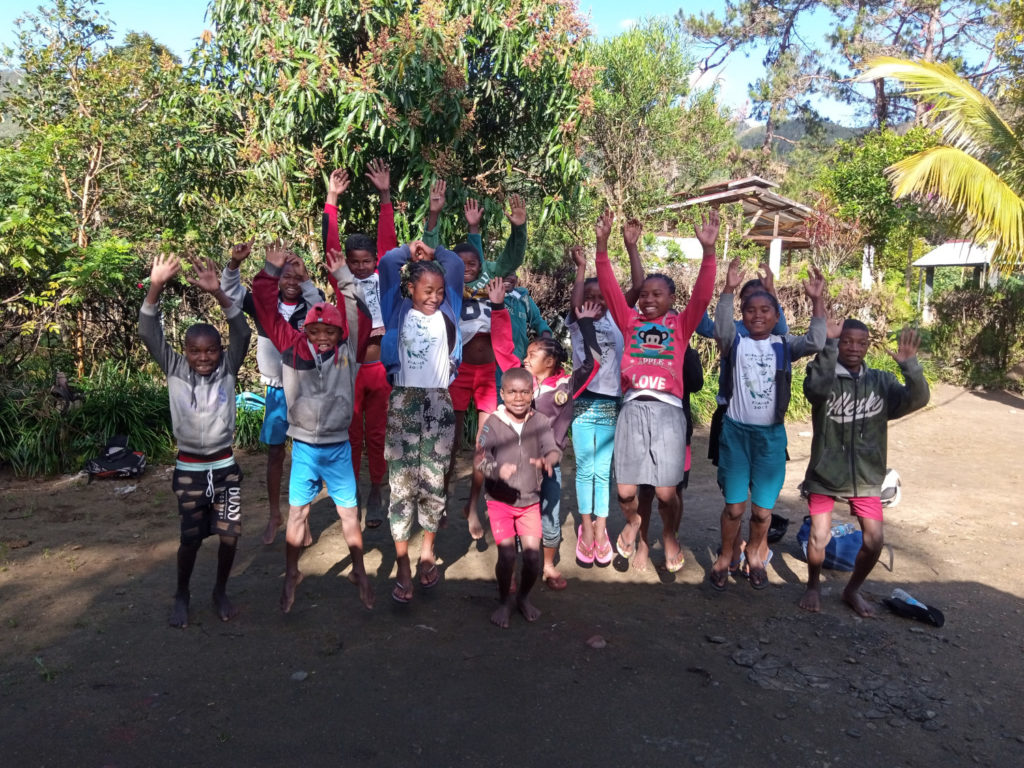
In 2022, we also organised seven visits to the Sahofika forest fragment, including two during the Christmas holidays when the Simus School was launched. These visits allowed 43 children to observe the greater bamboo lemurs (Group 5) and the red-bellied lemur family (monitored since 2017). The children quickly identified the latter as the heroes of their illustrated booklet entitled « Noro’s haven ».
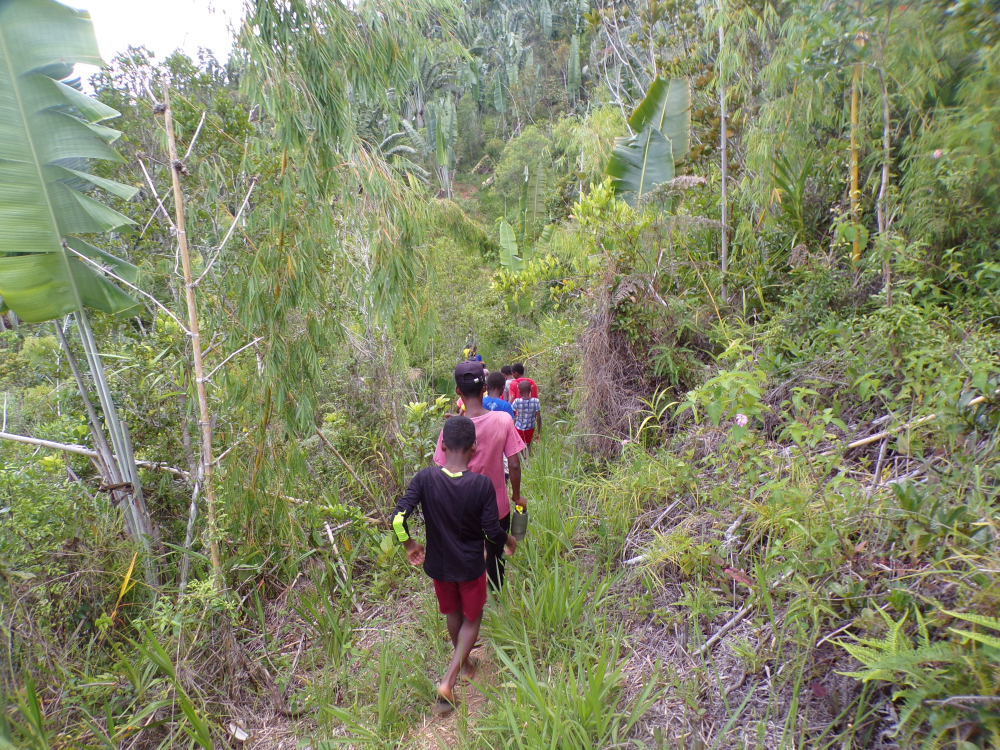

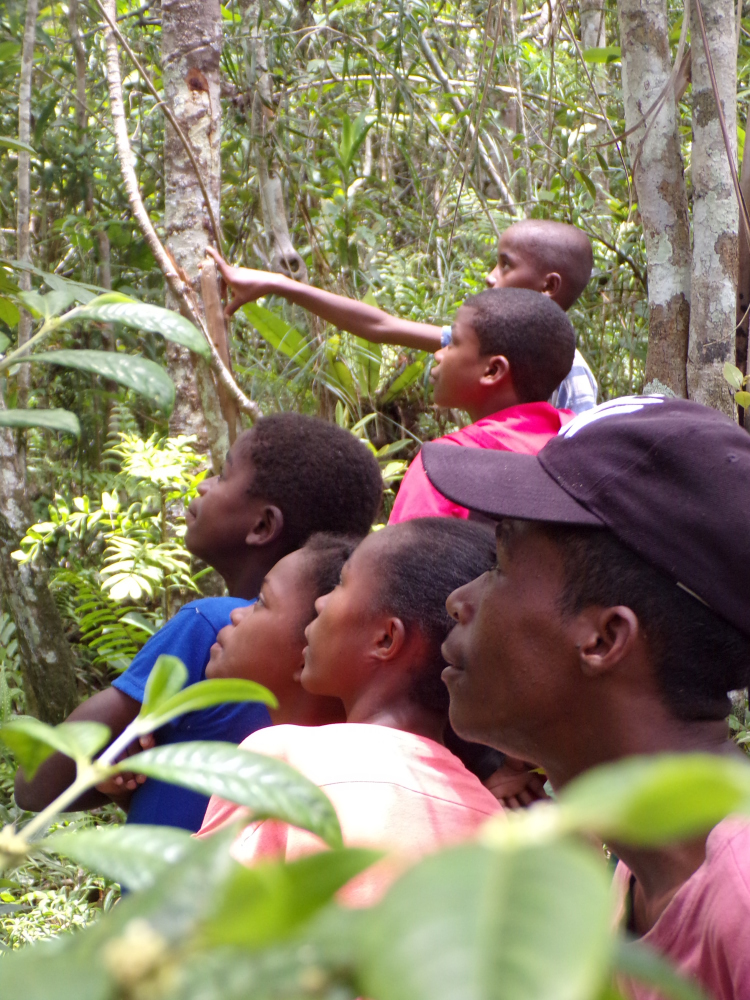
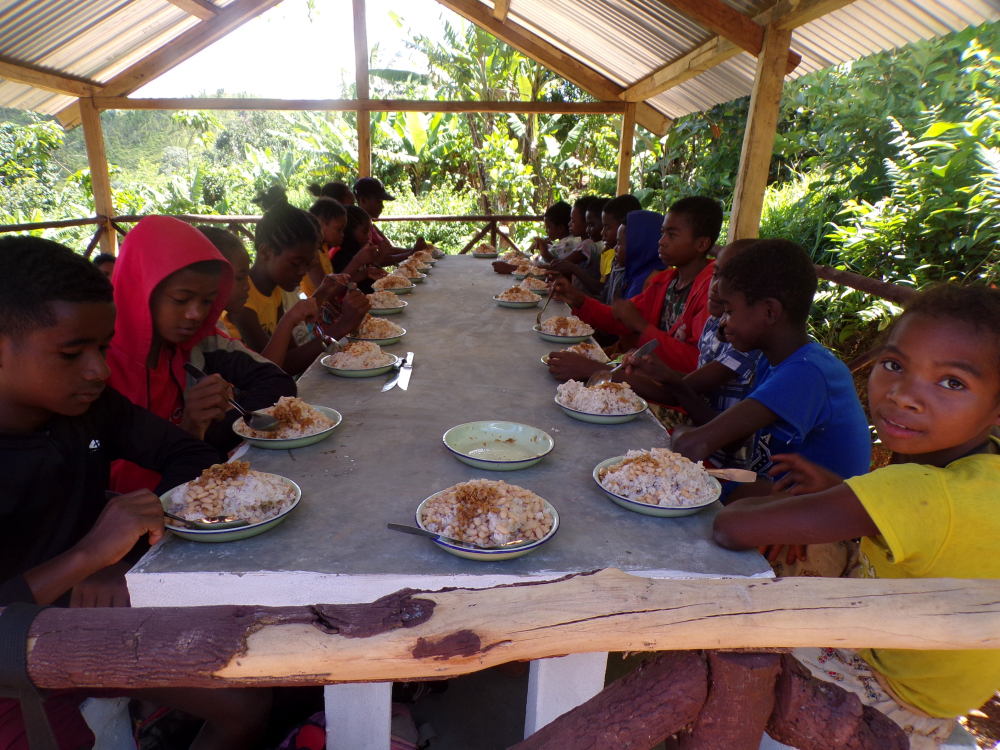
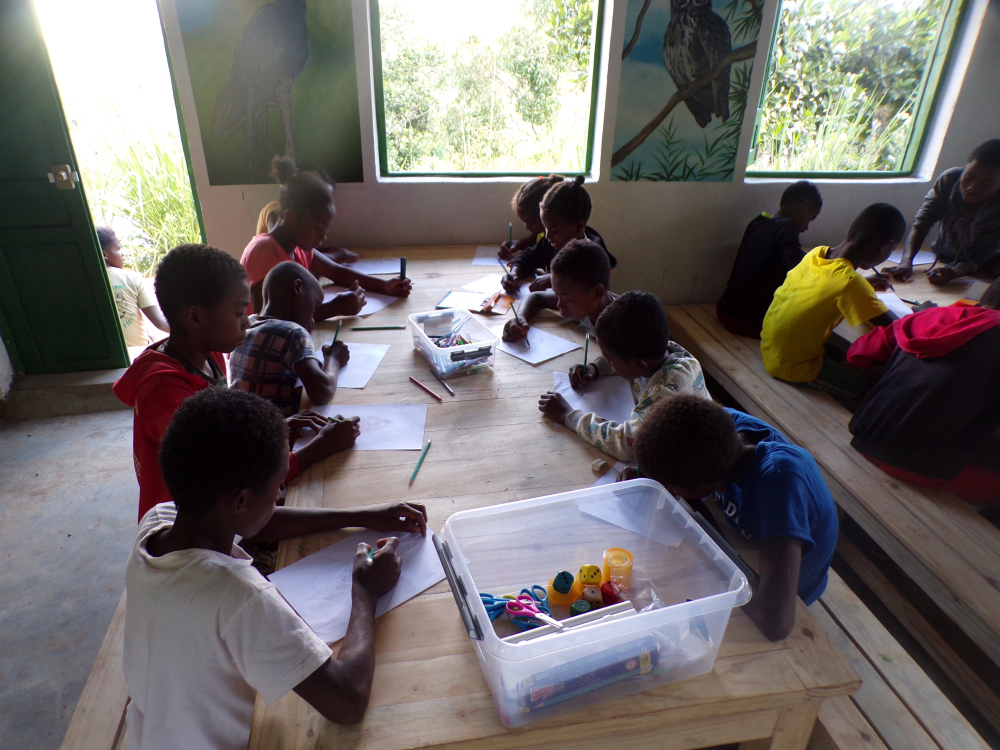

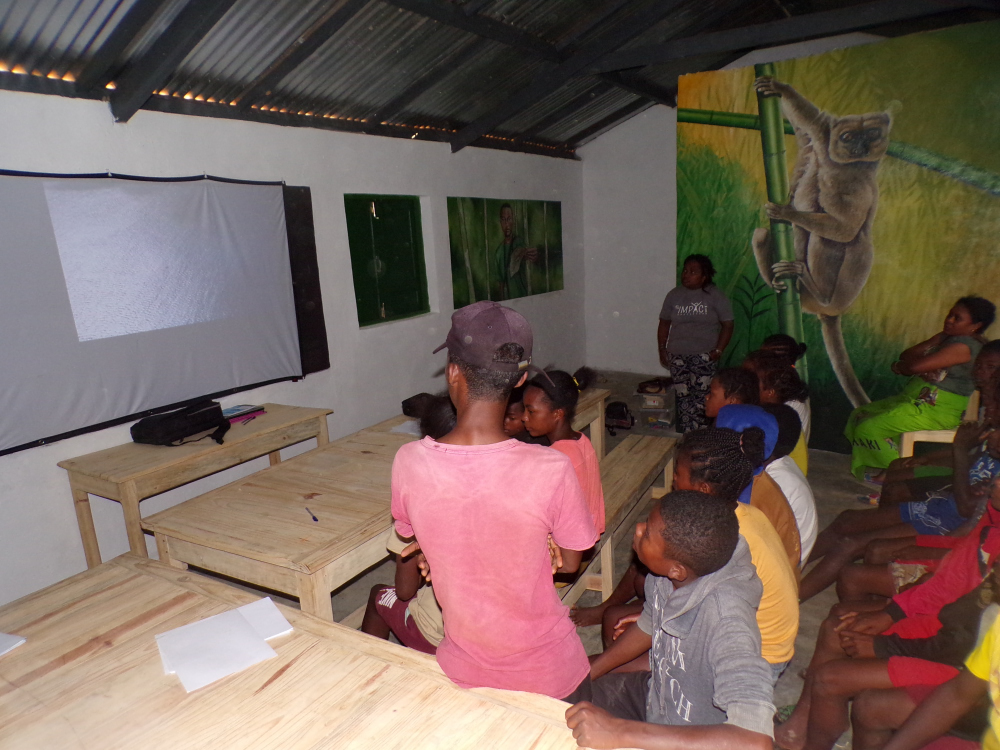
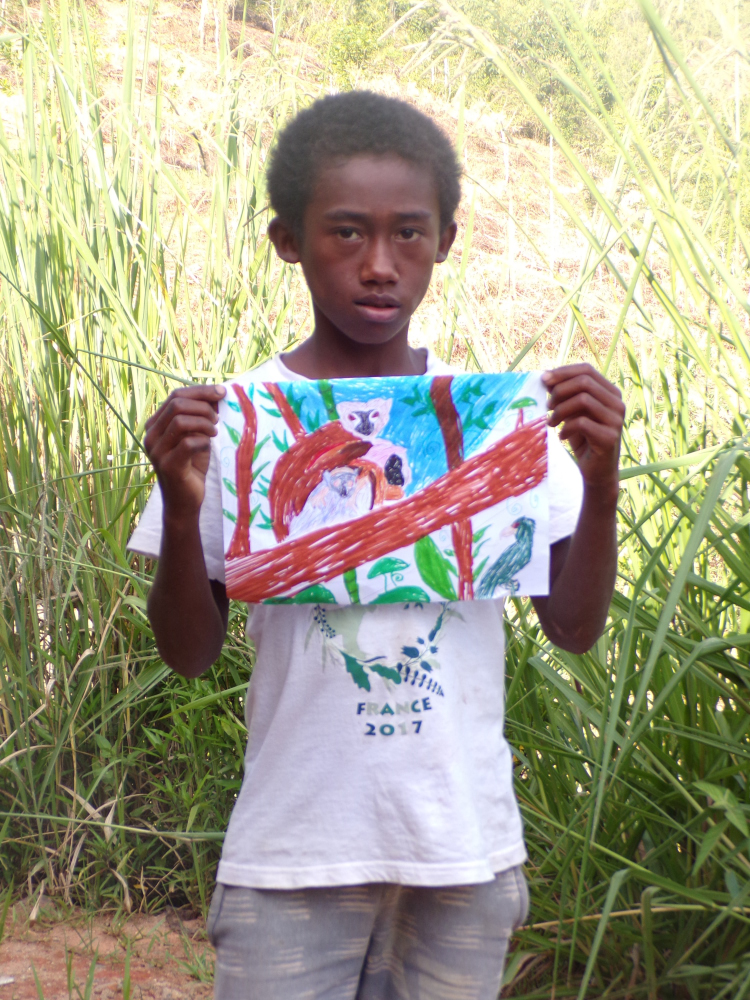
In September and October, Laurent and Mary focused on preparing the Simus Festival, a major event that had not taken place since the beginning of the pandemic. About 150 children participated in this event, performing songs and dances. Laurent even composed a song especially for the occasion, which was covered by several schools.
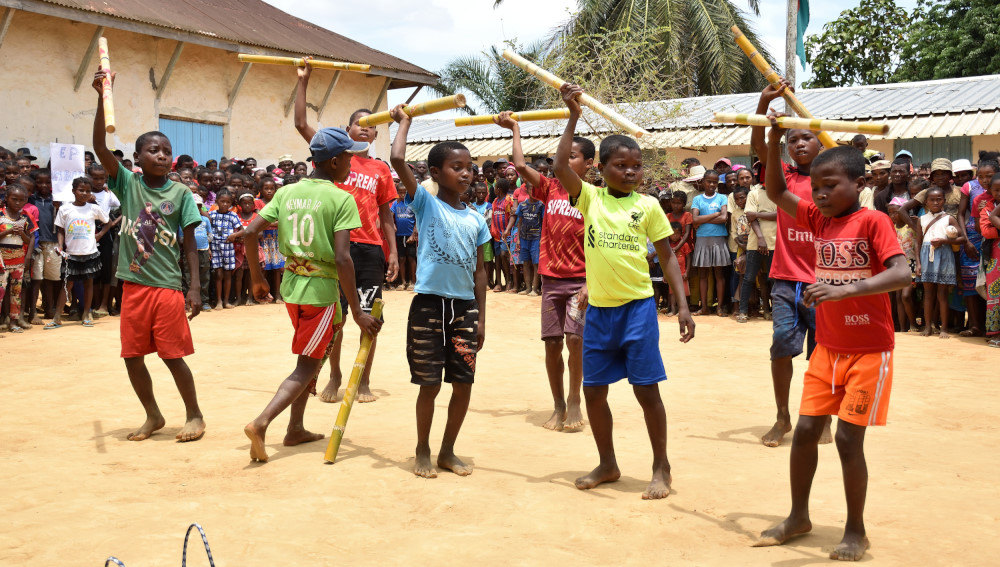
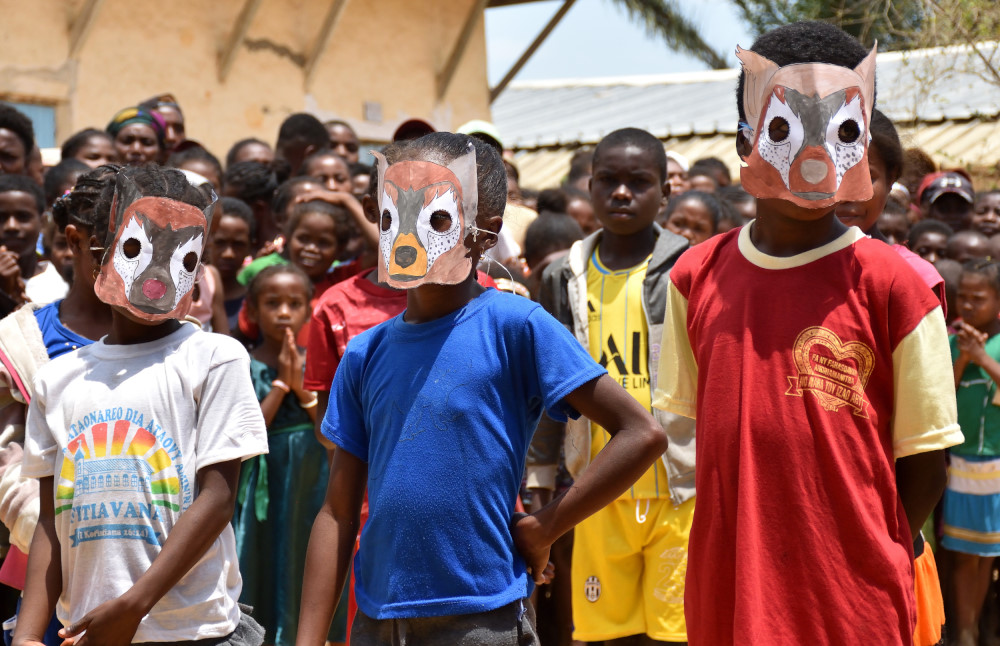
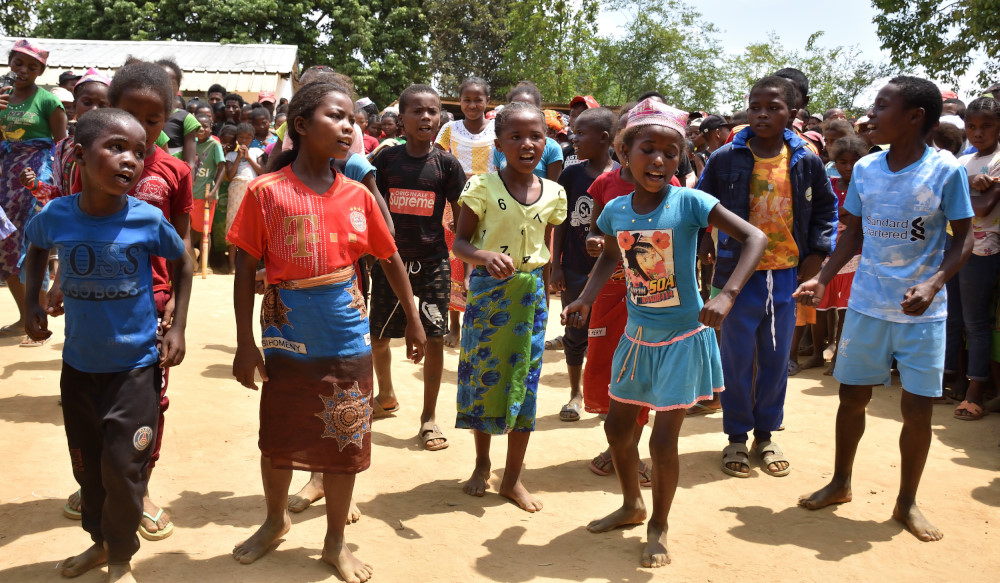
Simus festival © D. Roullet
Thus, the year 2022 was particularly rich for our environmental education programme, whose main objective is to enable children to learn more about their biodiversity and to learn how to preserve it.
In 2022, we extended the guarding of rice fields to our entire intervention area to protect the only crops that resisted the two February cyclones.
As a reminder, rice represents less than 0.5% of the greater bamboo lemur diet, however, groups of 60 to 80 individuals can destroy up to 80% of a rice plot that normally sustains a farming family for several months.
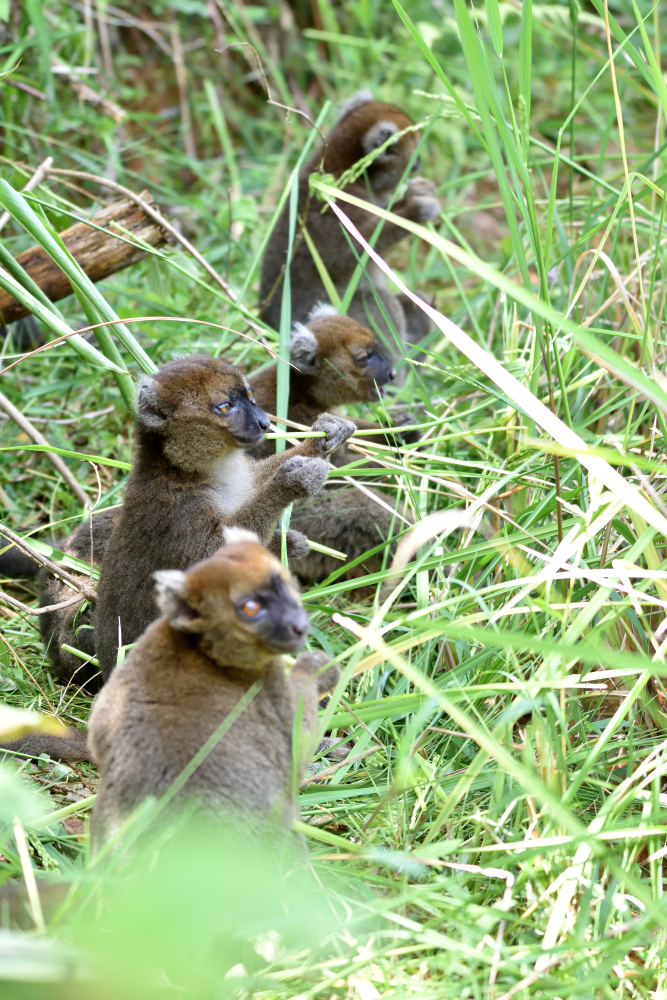
© D. Roullet
The video below explains how the crop guarding works.
The team of guards is now composed of 60 people, their number has been multiplied by 5 in almost 3 years.
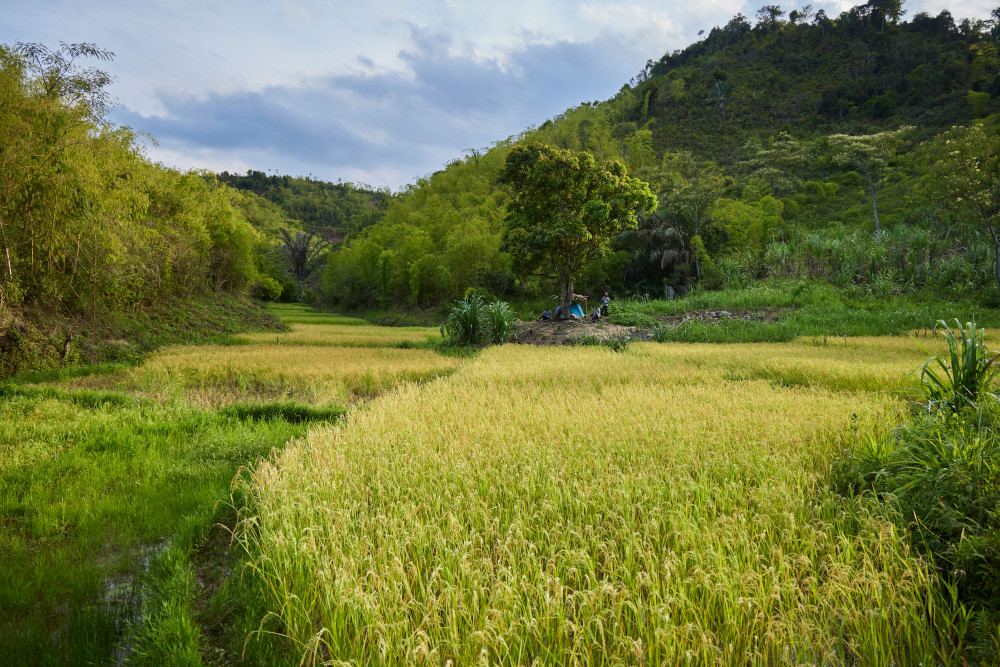
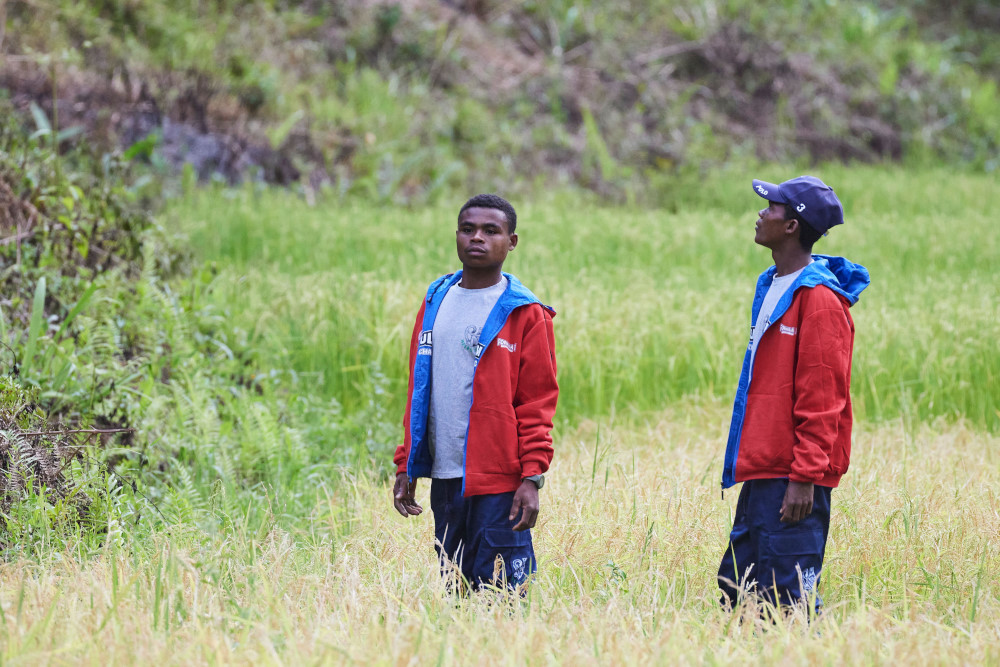
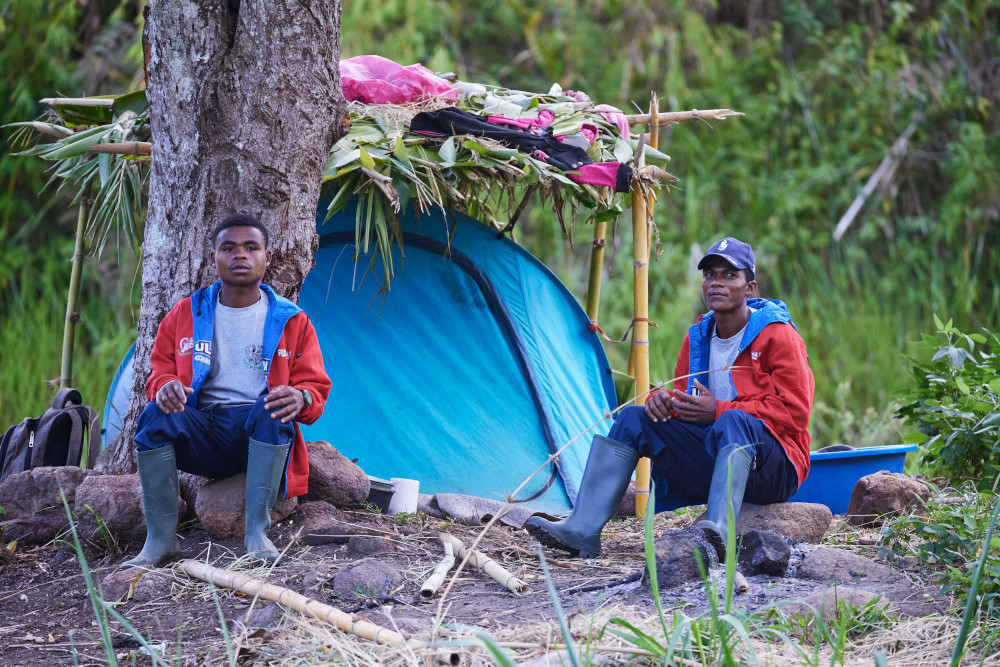
The number of beneficiaries has been multiplied by more than 3 in almost 3 years. There are now 131 farmers who benefit from this programme.
In 2022, 672 rice fields have been protected from the greater bamboo lemurs.
From April to June, 412 attacks have been repealed in 188 paddy fields.
Apart from a few isolated incidents in only 12 rice fields, no damage was observed in the other 660 rice fields.
The crop guarding not only protects the rice fields but also creates jobs in a period of great insecurity.
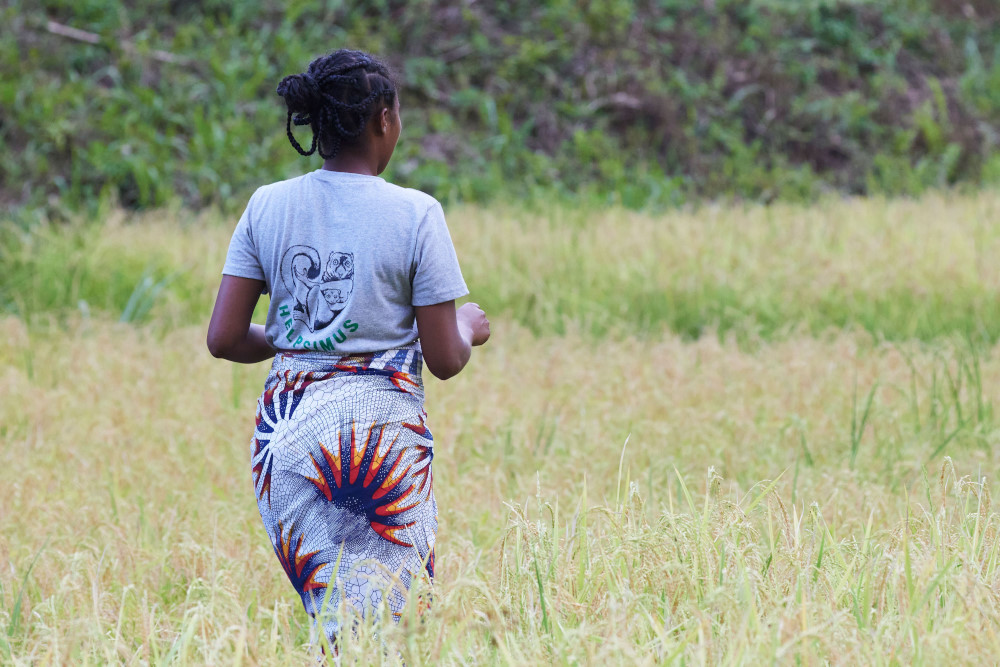
In Madagascar, almost 40% of the population is under 15 years old, and almost 60% under 25 years old. The fertility index (average number of children per woman) is equal to 5 children per woman. Thus, Madagascar has one of the highest population growth rates in the world.
Induced abortion (or voluntary termination of pregnancy) is the first cause of maternal mortality.
In Vohitrarivo, many young girls do not finish their primary education because of an unwanted pregnancy.
Most of them have never received sex education or even information about menstruation before the arrival of their first period, which was often experienced as a traumatic event.
Old rags or leaves can be used as sanitary napkins.
The contraceptive injection, which causes significant side effects, is the method of contraception used by women (and sometimes young girls) in the rural commune of Tsaratanana.
Our first mother-daughter workshop on the menstrual cycle and hygiene was organized in January 2022 in Vohitrarivo with the help of Impact Madagascar as part of a partnership with the Rotary Club Paris Est.
35 mothers and their daughters aged 11 to 60 took part in this workshop during which various themes were discussed:
Individual or small group interviews were previously conducted in the village with the women to determine their knowledge on the subject.
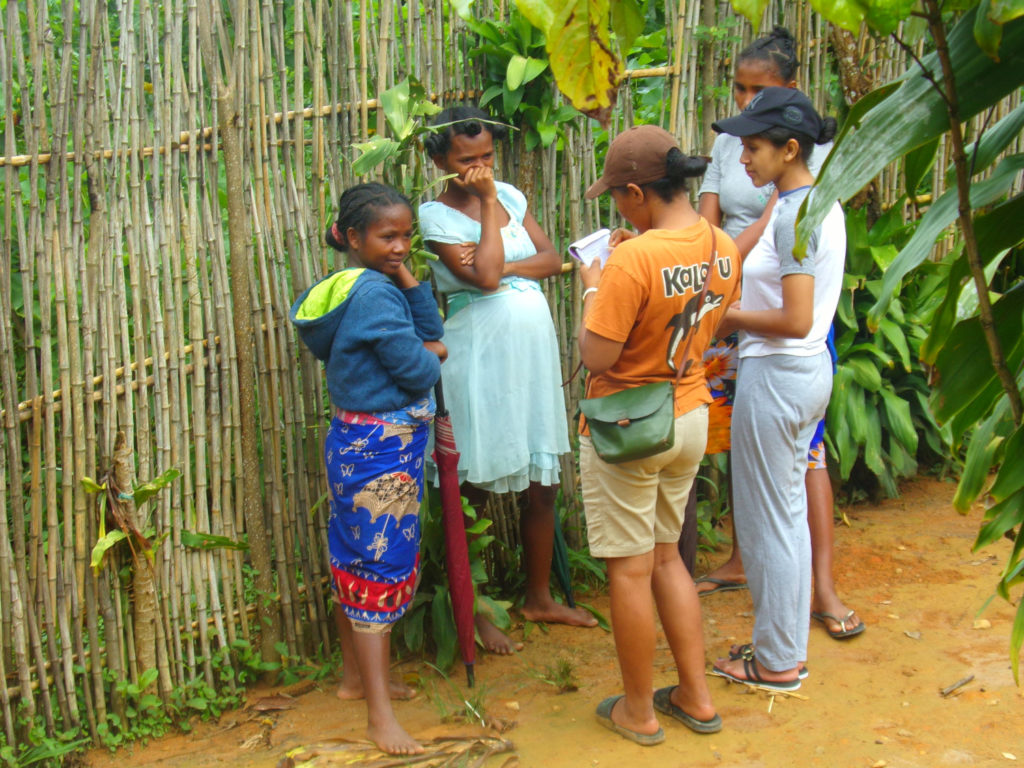
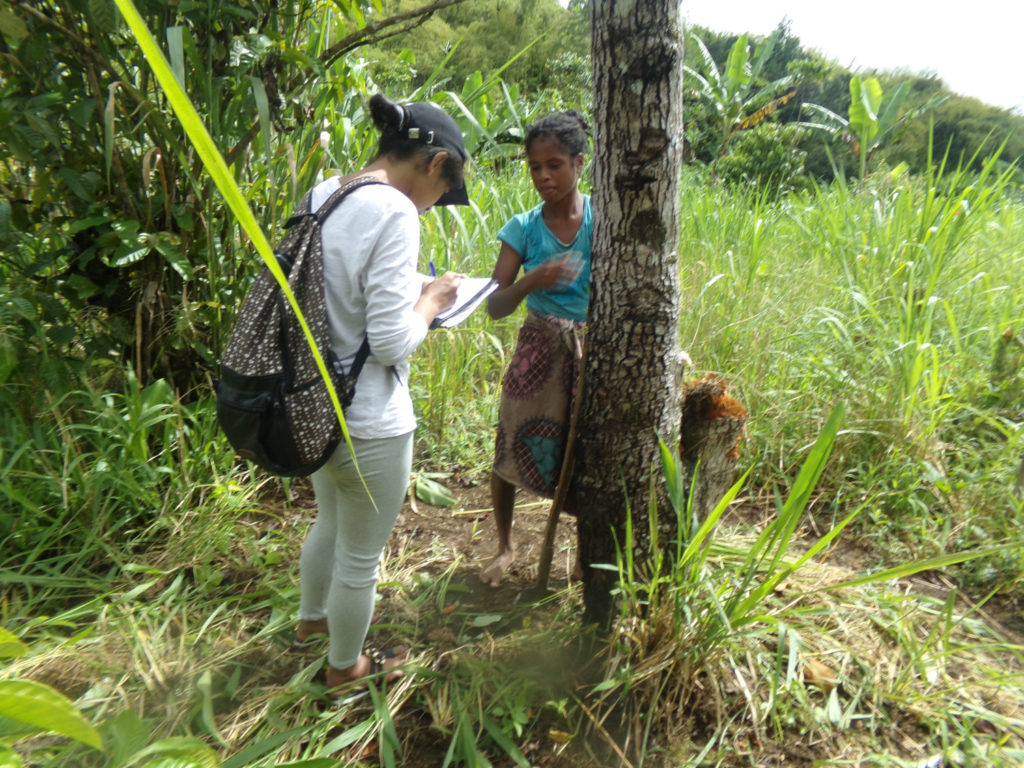
Questions were asked after the workshop to the participants to assess their knowledge.
The workshop format has been acclaimed by the participants who appreciated being able to talk to each other, the older ones sharing their experience with the younger ones who felt more confident to ask questions on an intimate subject that is not always easy to approach.
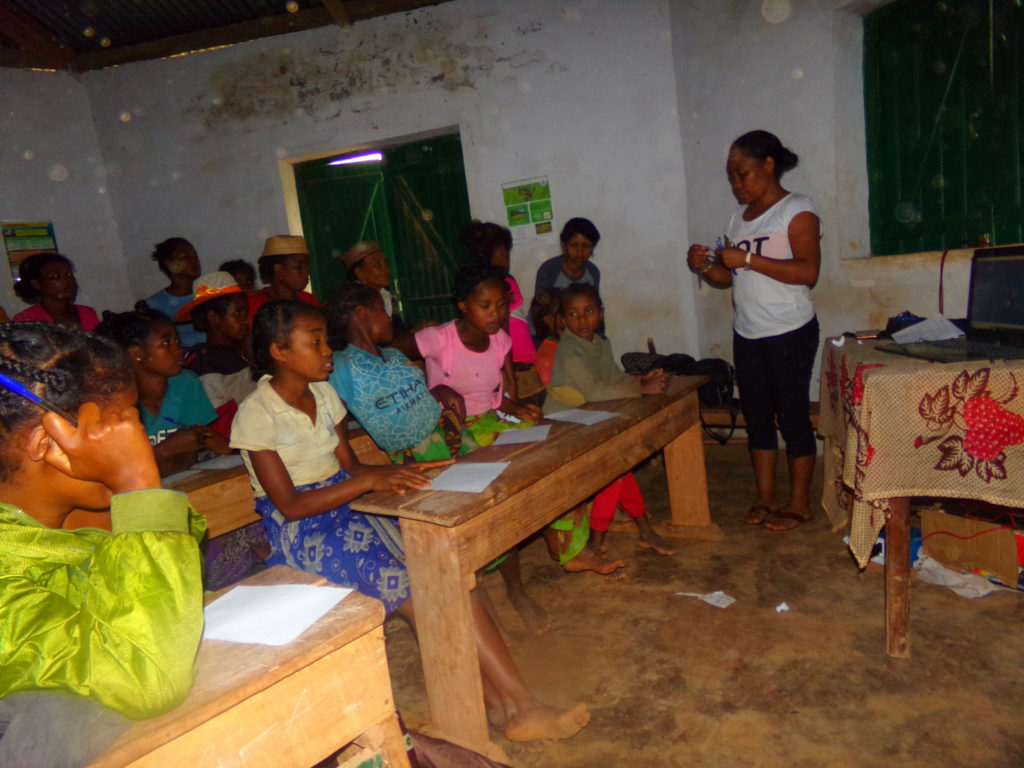
The workshop © Impact Madagascar
All participants agree that it is essential that every adolescent girl receive sex education.
All of them acquired new knowledge, in particular about the menstrual cycle, the use of adapted sanitary napkins, pregnancy, etc.
At the end of the workshop, they received soap and cotton sanitary napkins made by the embroiderers of the artisanal embroidery project.
The aim of this workshop is to improve the lives and health of women, but also to prevent teenage pregnancies. These are in fact the cause of sometimes serious health problems (which can lead to death) and the school failure of many adolescent girls.
Thus one of the slogans of the workshop is: « women who thrive, are responsible for their health, take care of their future and their children »
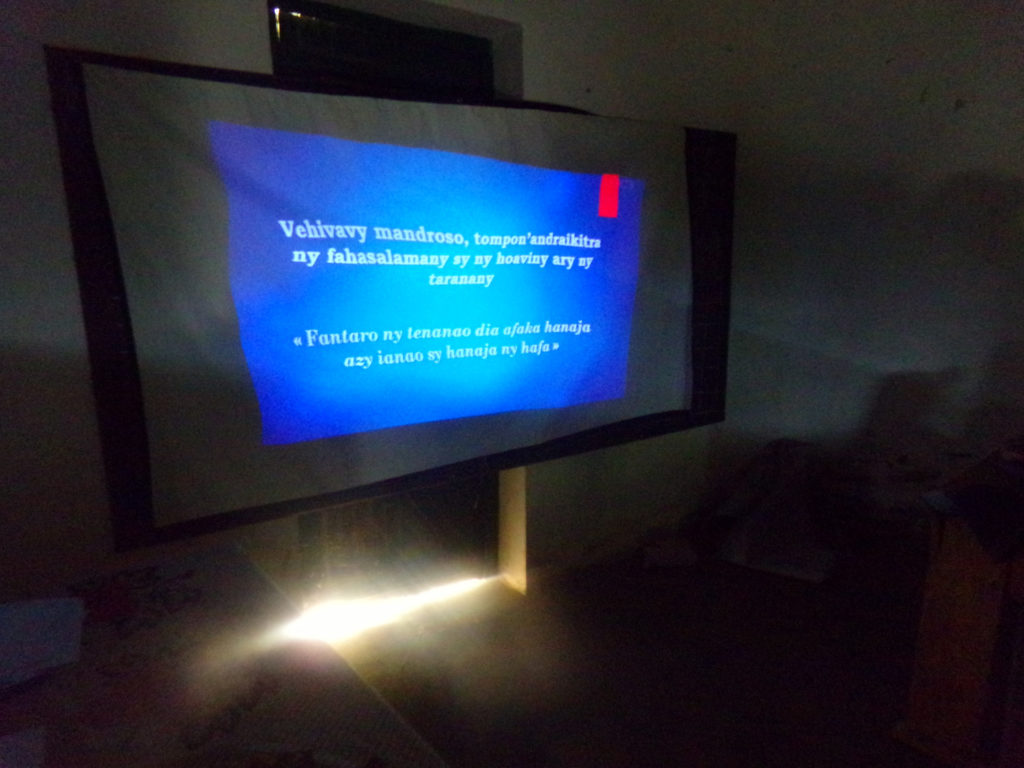
Slogan of the workshop © Impact Madagascar
This workshop, to which our educator is trained, will be organized for all our partner villages.
A father-son workshop should also be created soon.
Source : Impact Madagascar
The first three years of managing the Miradia VOI were assessed in 2021 and its management plan has been updated (without major changes):
– the number of members is increasing, to 186 today (vs. 138, 3 years ago).
– 78 patrols were organized by the 19 patrollers of the VOI responsible for checking the clearing.
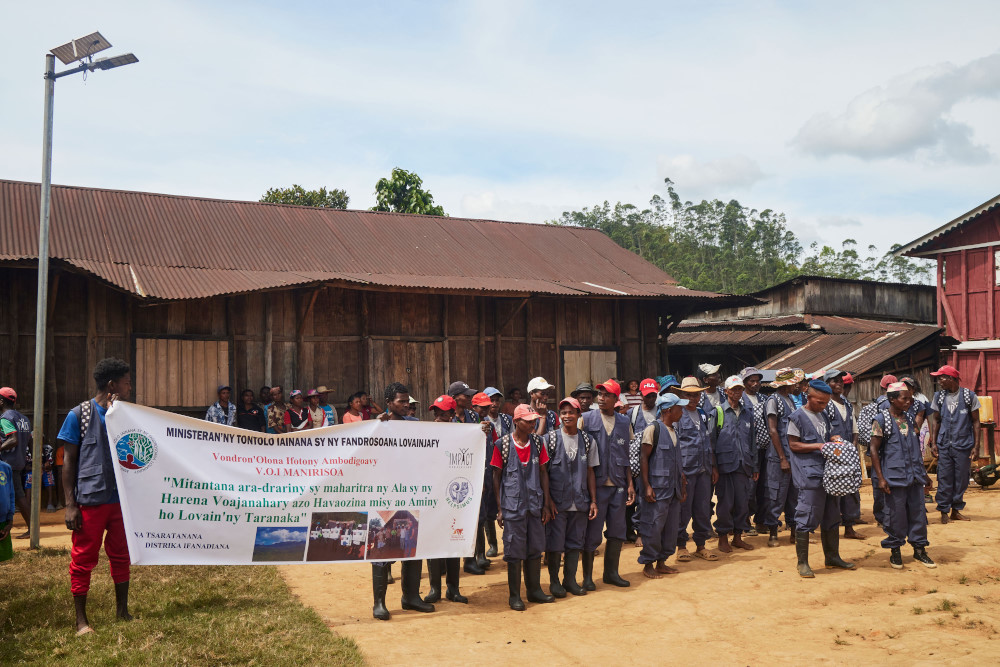
The patrollers of the 3 VOI © S. Meys
– the amount of “tavy” (consisting of clearing and then burning an area of vegetation to cultivate it) has decreased significantly since the VOI was set up.
However, we deplore the destruction of 4 ha of forest that have been burned over the past year: 3 ha in one of the conservation areas and 1 ha in one of the restoration areas (near the forest fragment where we develop the ecotourism project).
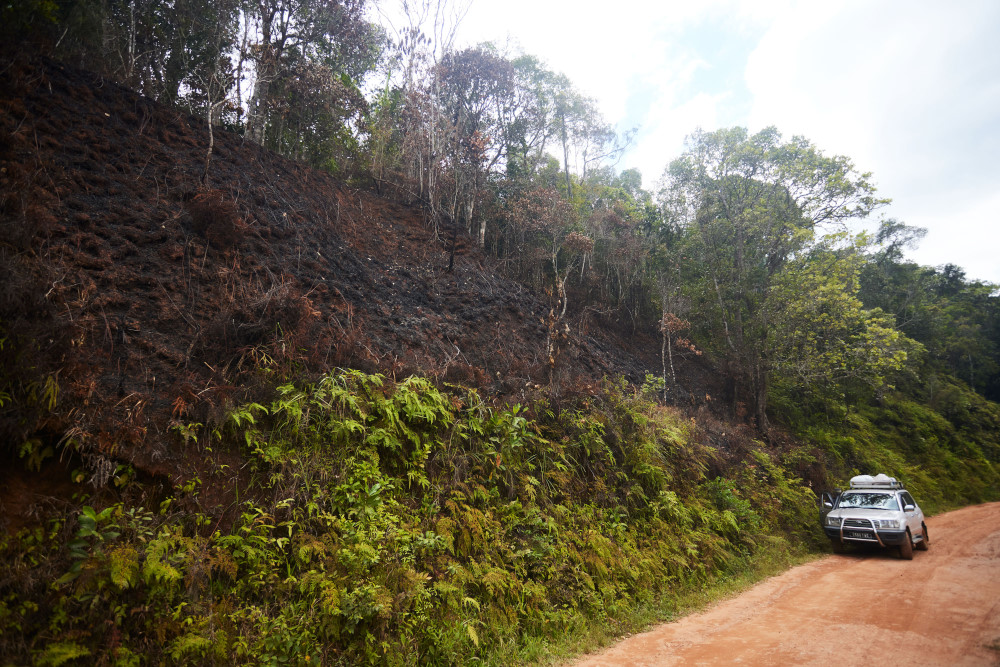
Tavy in a conservation area © S. Meys
– the bamboo forests are becoming denser in the restoration areas.
– the lemur populations are growing.
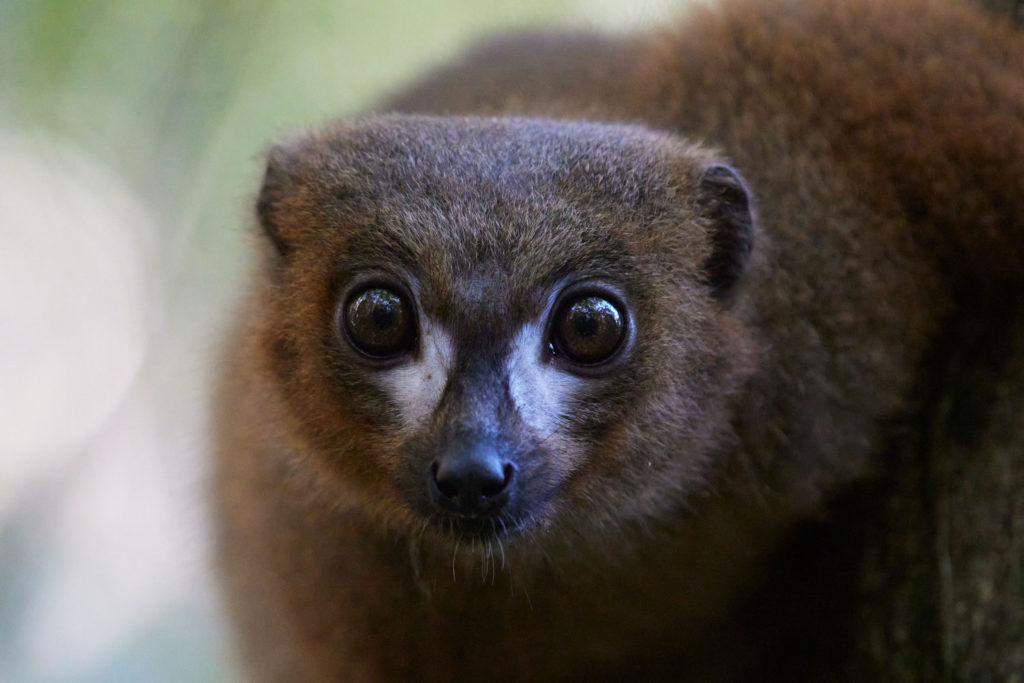
Red-bellied lemur © S. Meys
– some forest fragments are starting to connect.
– threats to the lemurs have diminished.
– living conditions in our partner villages have improved.
The contract with the VOI has therefore been renewed for 3 more years in a ceremony that took place on December 10, 2021.
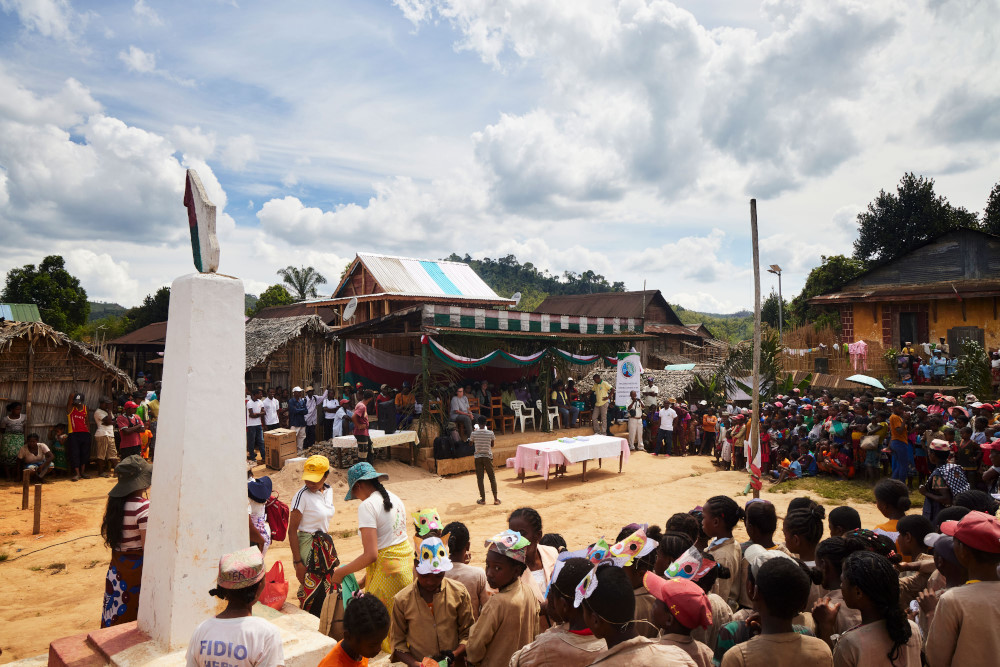
Renewal ceremony of the contract with the VOI Samivar © S. Meys

Representatives of the local authorities © S. Meys
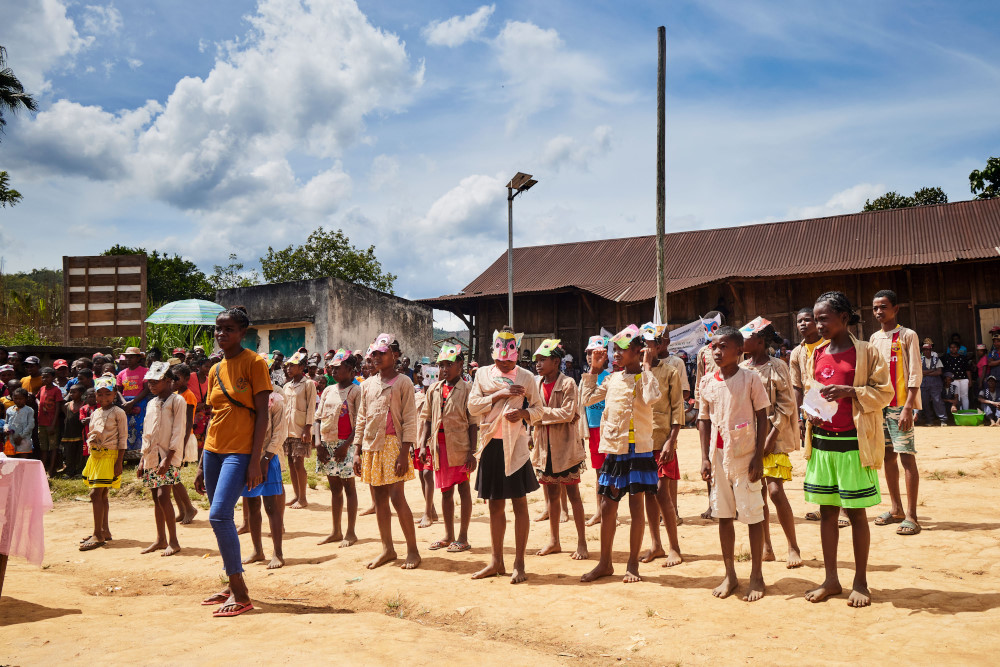
Show prepared by the children of the Sahfika school with Mary, our eduactor © S. Meys
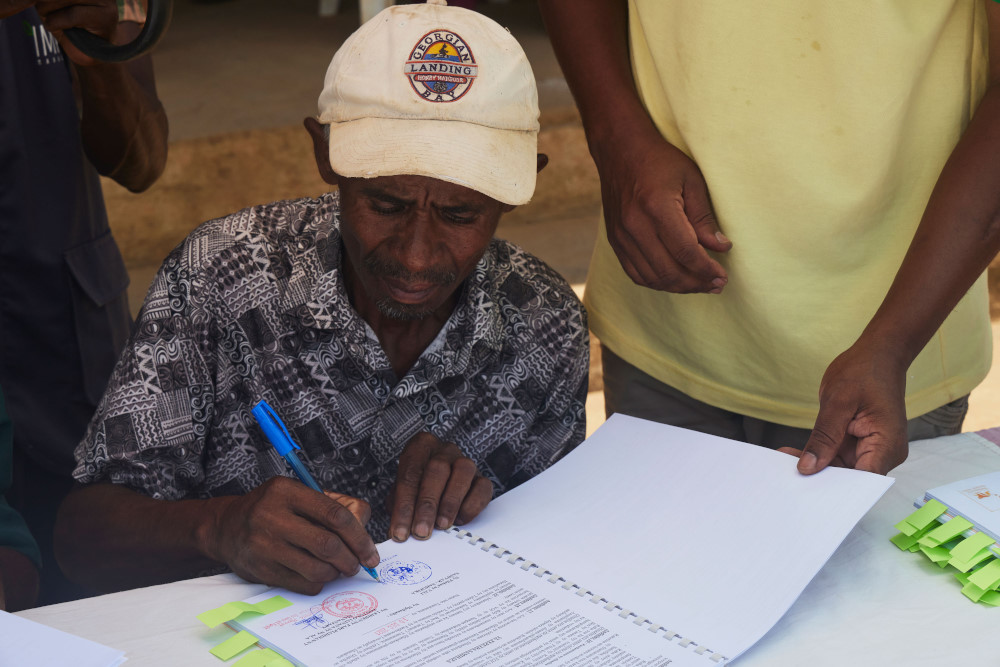
Signature by the President of the VOI © S. Meys
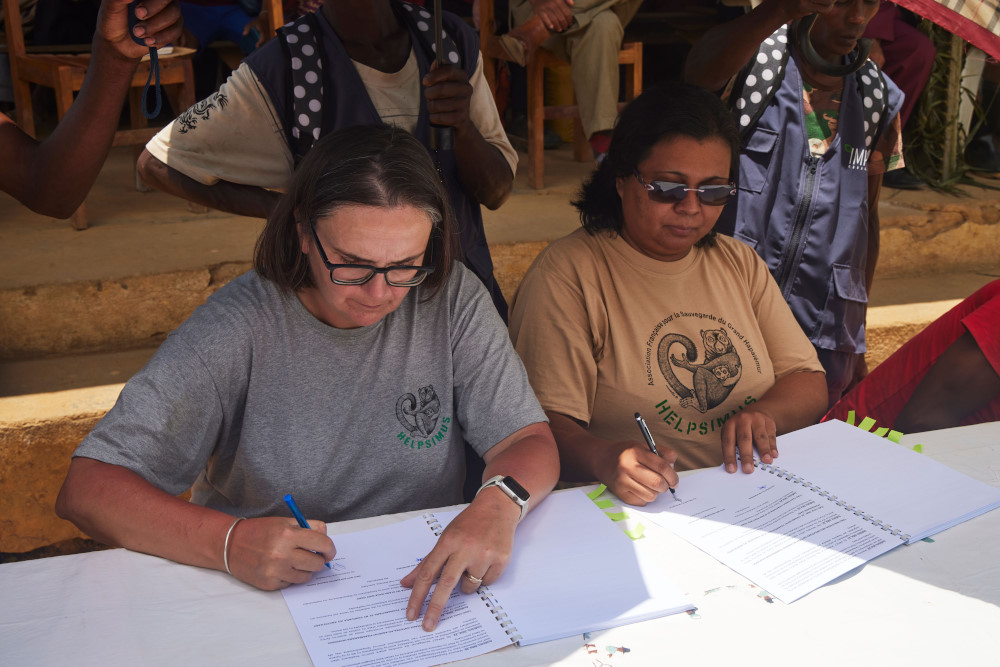
Signature by the President of Helpsimus and the founder of Impact Madagascar
On the night of February 5 to 6, 2022, Cyclone Batsirai hit severely the southeast of Madagascar, crossing the Vatovavy region where Helpsimus is located.
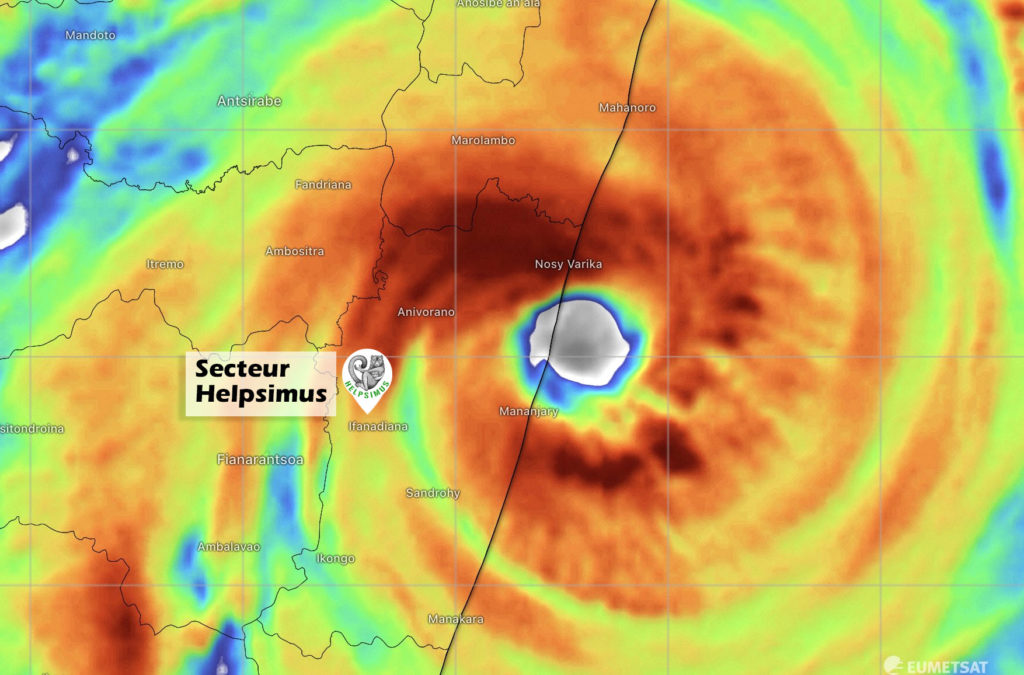
© Cycloneoi.com & Windy.com
This high-intensity tropical cyclone caused extensive damage, forcing nearly 2,700 people to flee their homes in the rural commune of Tsaratanana.
The wooden houses whose roof is made of Ravenala leaves did not resist winds of more than 170 km / h with peaks at 235 km / h.
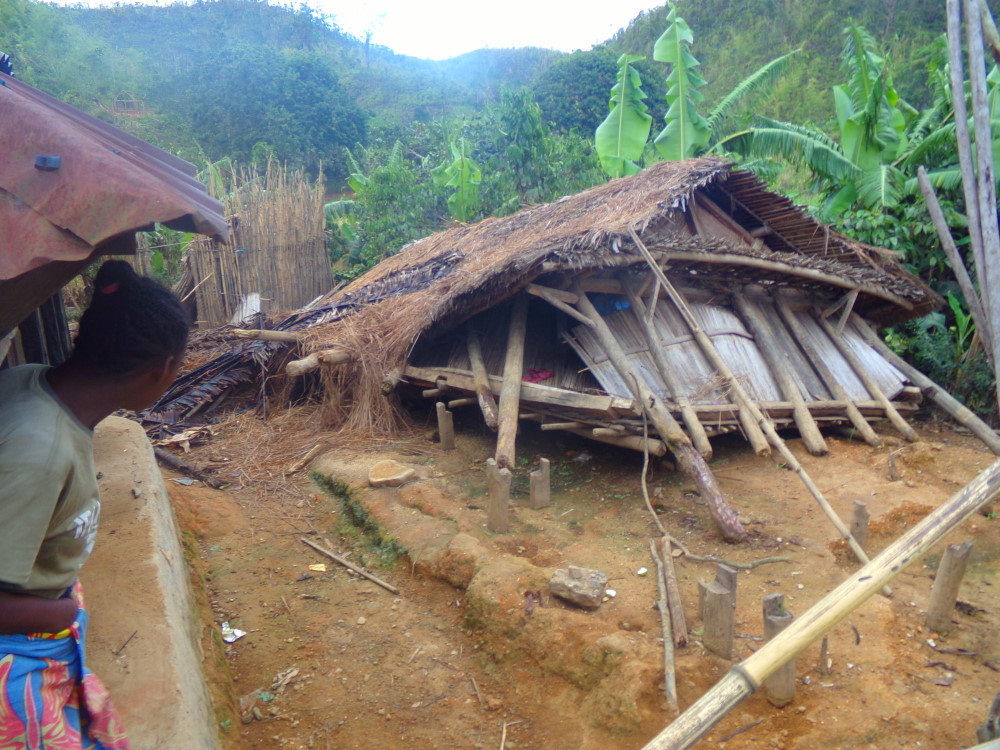
© Impact Madagascar
The heavy rains generated by the cyclone caused severe flooding in some villages. The water thus rose up to 3 m in Sahofika.
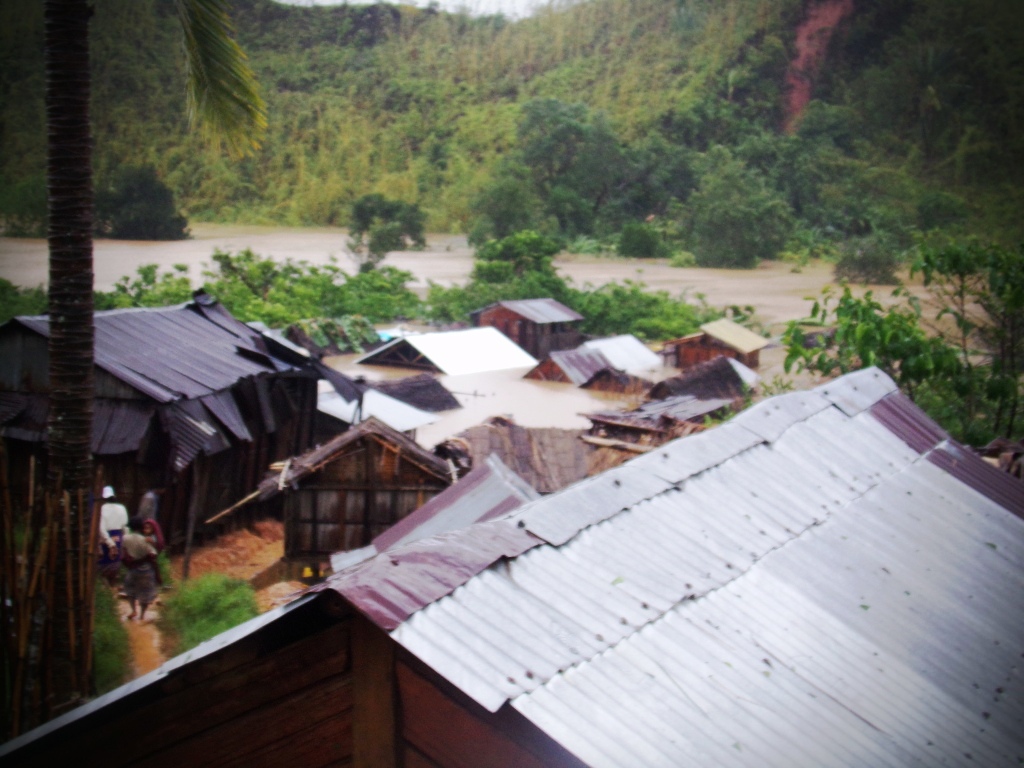
Village of Sahofika © Helpsimus
Many roads were damaged or blocked by falling trees further isolating many villages.
School infrastructure such as schools in Sahofika and Ambodigoavy were sometimes heavily affected.
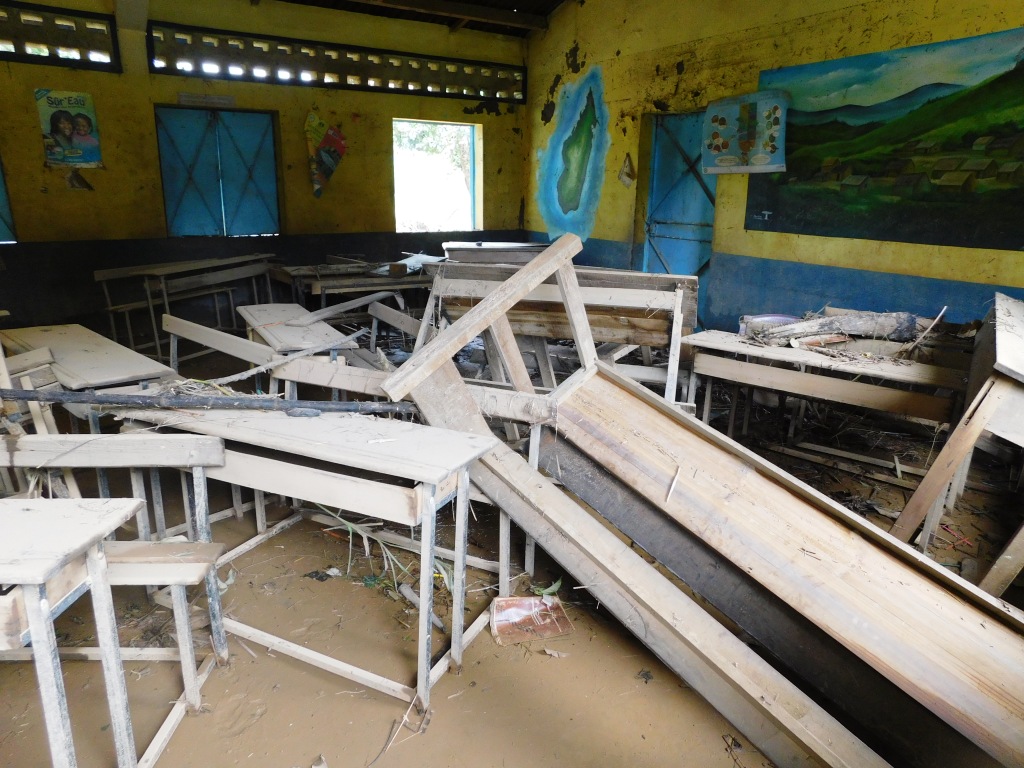
School of Sahofika © Helpsimus
The most dramatic aspect concerns the crops since many of them have been destroyed.
It is a real disaster for the inhabitants of the commune of Tsaratanana who, for the most part, practice subsistence agriculture.
Finally, the groups of lemurs, in particular the greater bamboo lemurs, have dispersed, requiring closer monitoring.
We are currently implementing an action plan to deal with the consequences of this cyclone and limit the pressures on the habitat of lemurs which will inevitably increase in the weeks/months to come.
It consists of :
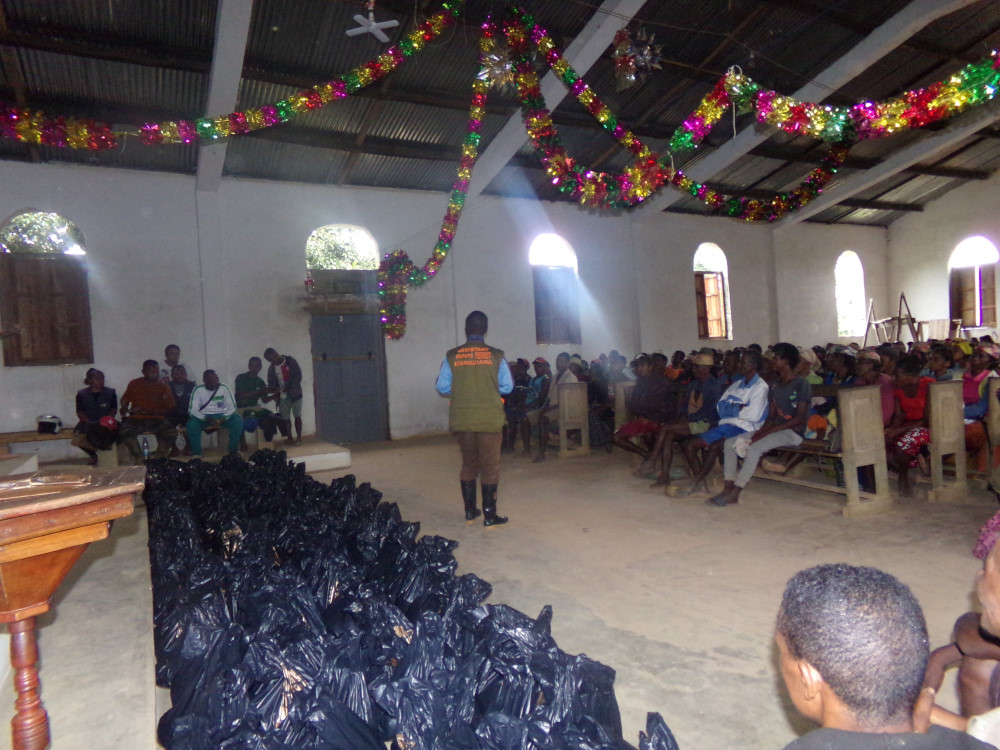
© Impact Madagascar
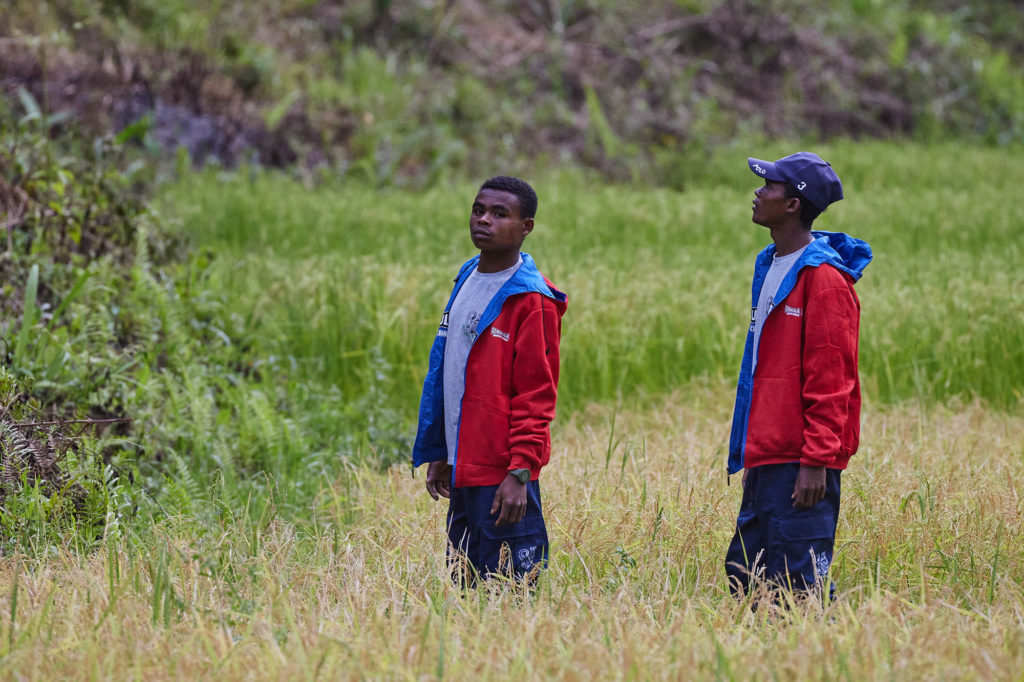
Guarding © S. Meys
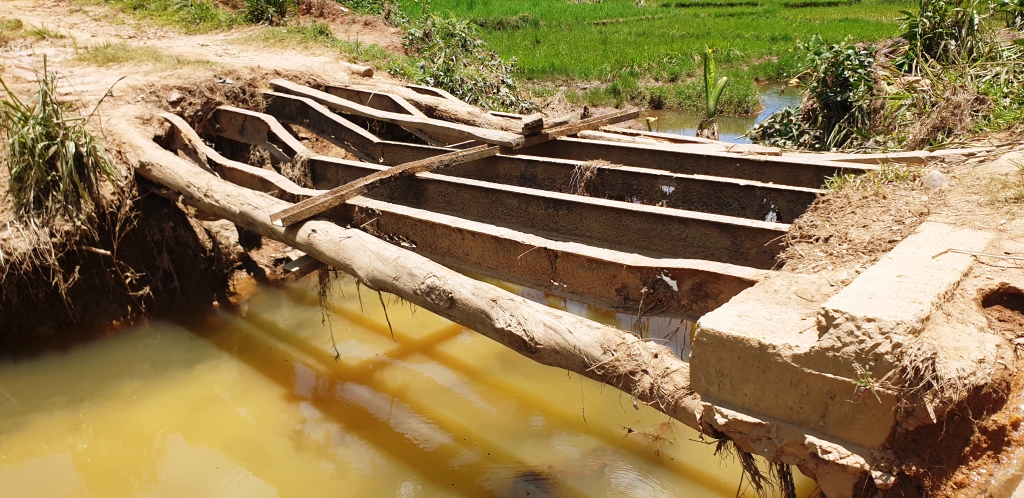
© Helpsimus
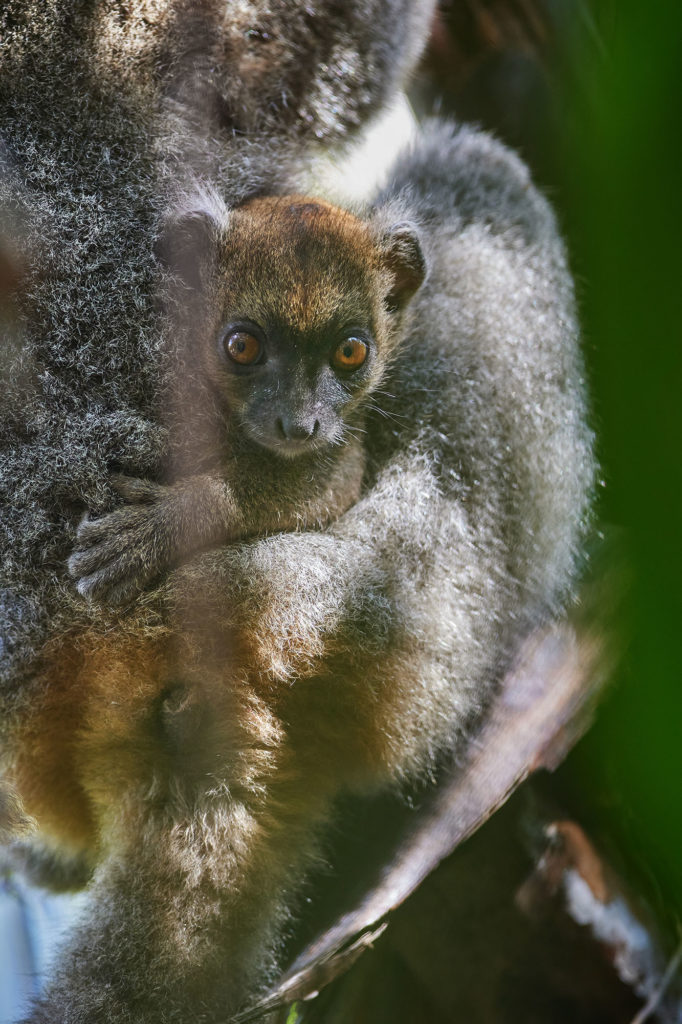
© S. Meys
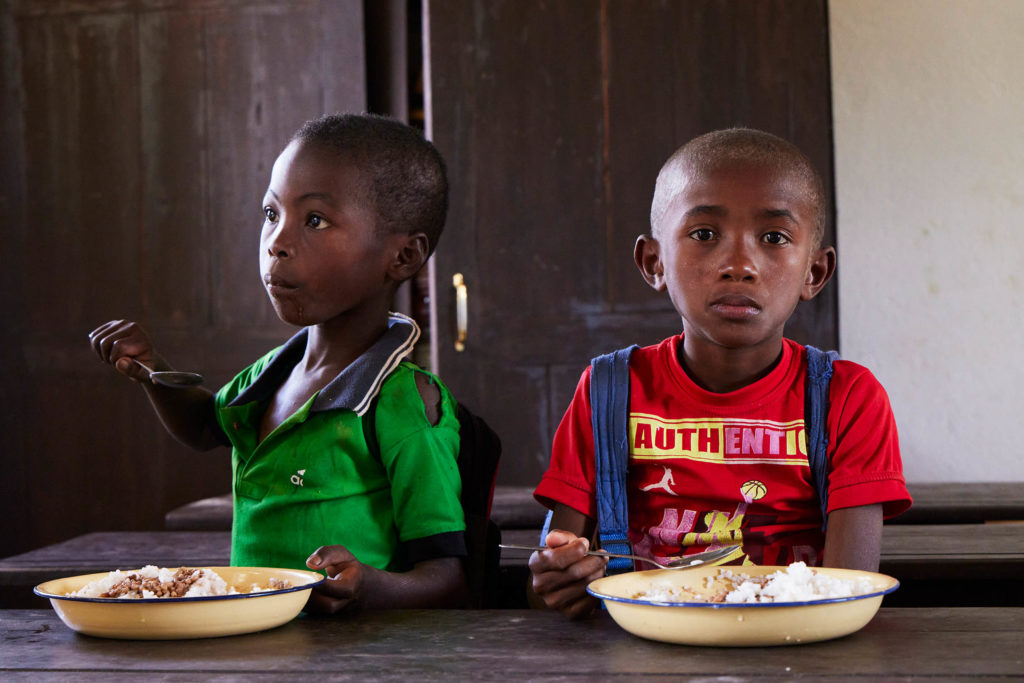
© S. Meys
In the commune of Tsaratanana, 27 primary schools and 2 colleges were completely destroyed by the cyclone.
Overall, the 14 permanent classrooms built by Helpsimus withstood the cyclone well.
The damage to our infrastructure is listed below.
In Sahofika:
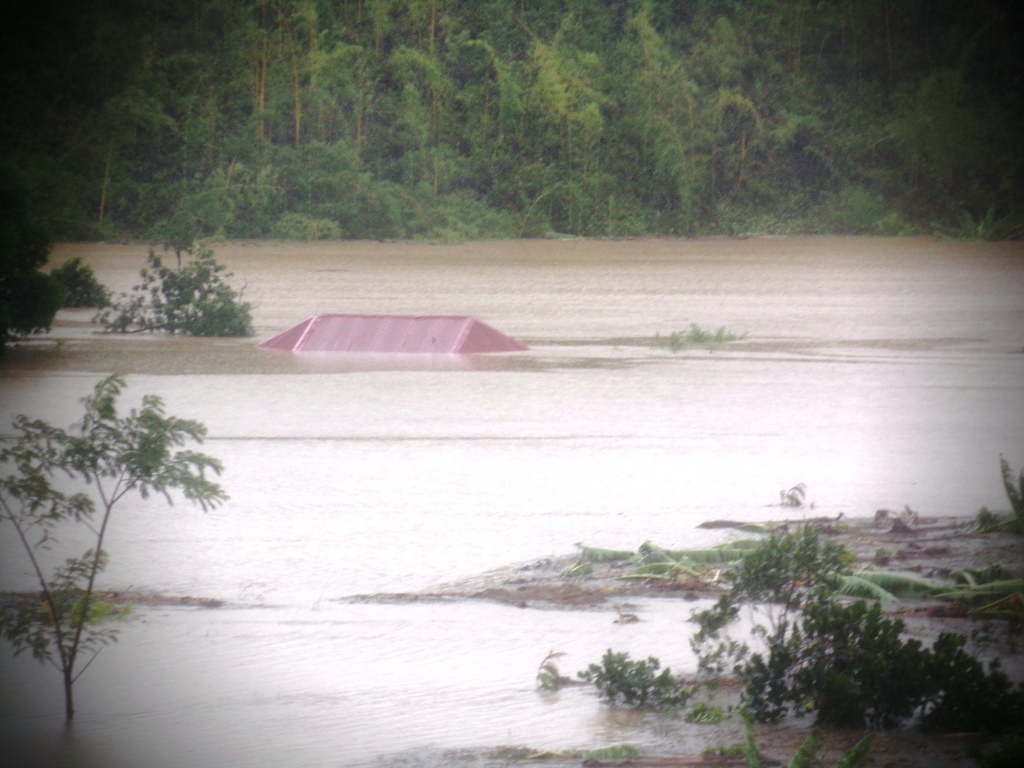
© Helpsimus
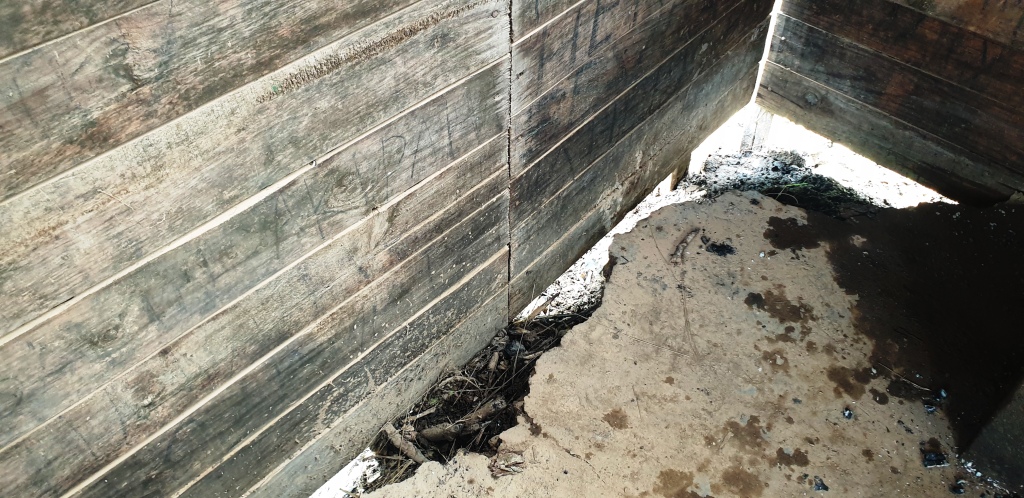
© Helpsimus
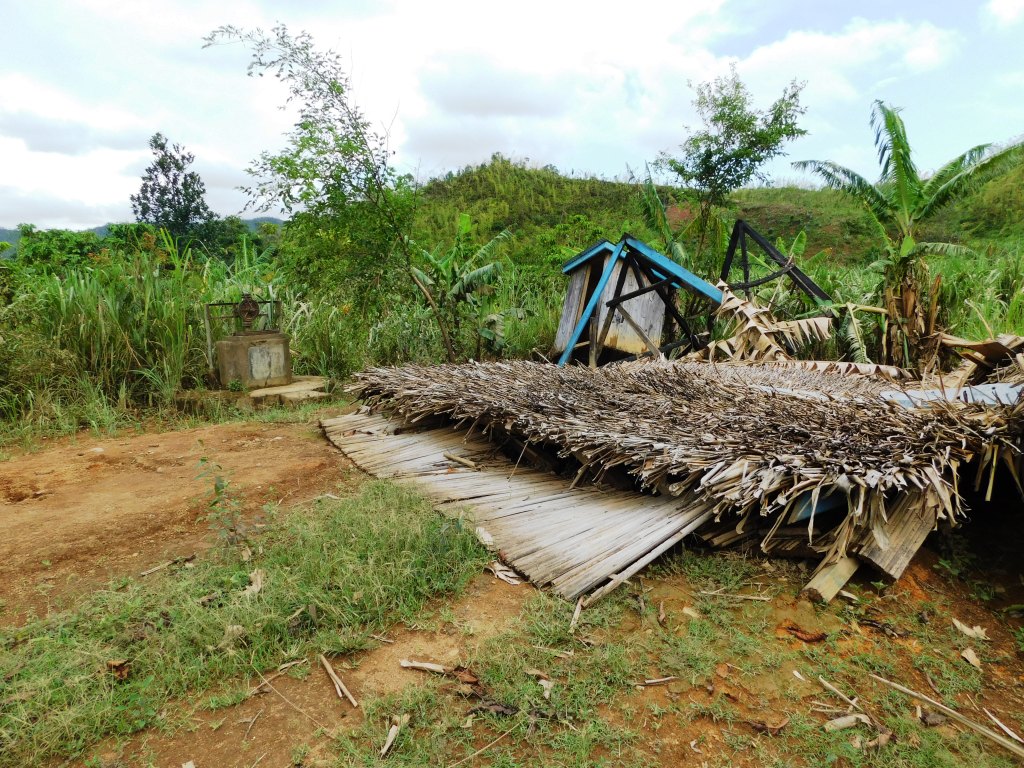
© Helpsimus
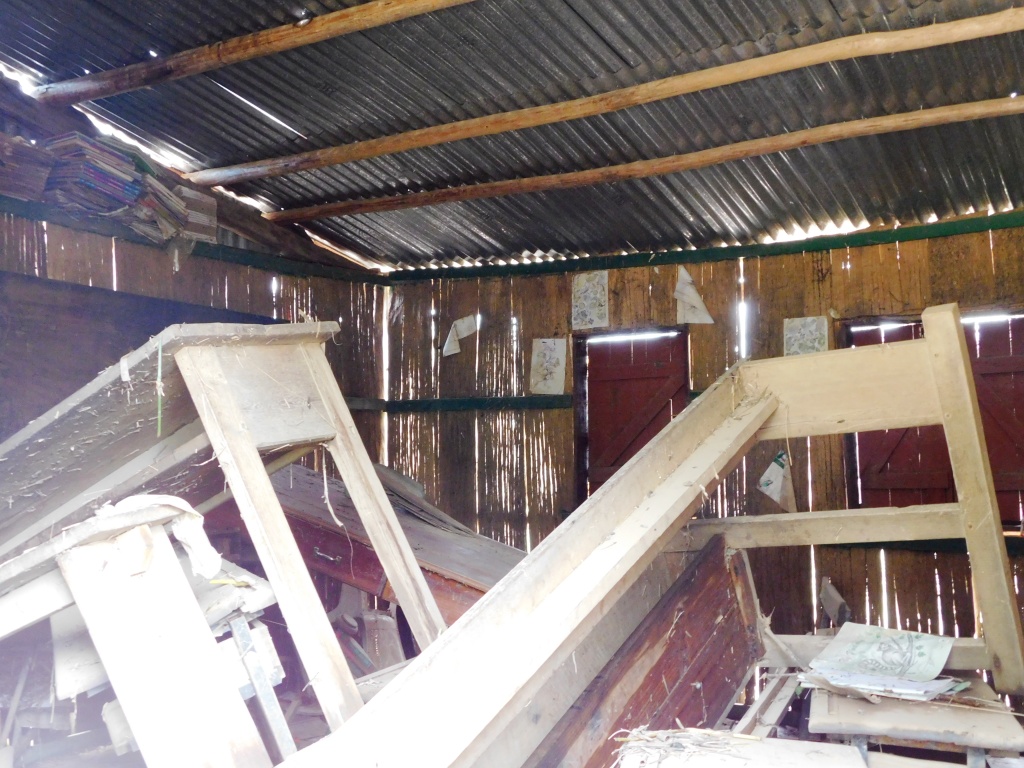
© Helpsimus
In Vohitrarivo :
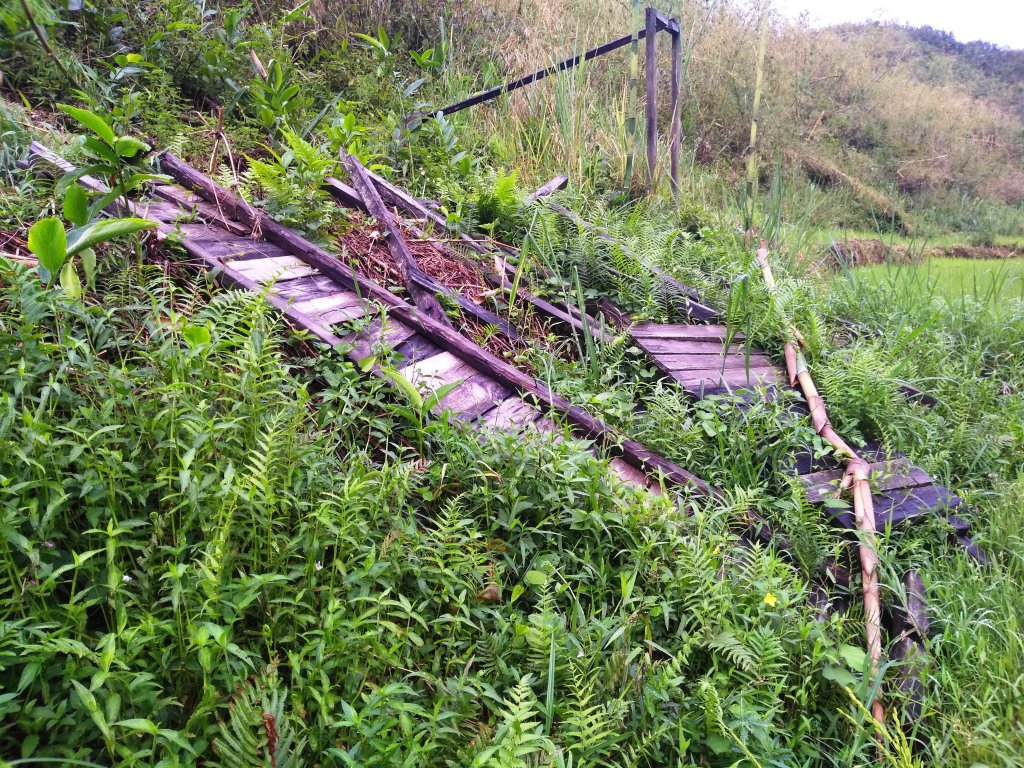
© Helpsimus
In Ambohipo :

© D. Roullet
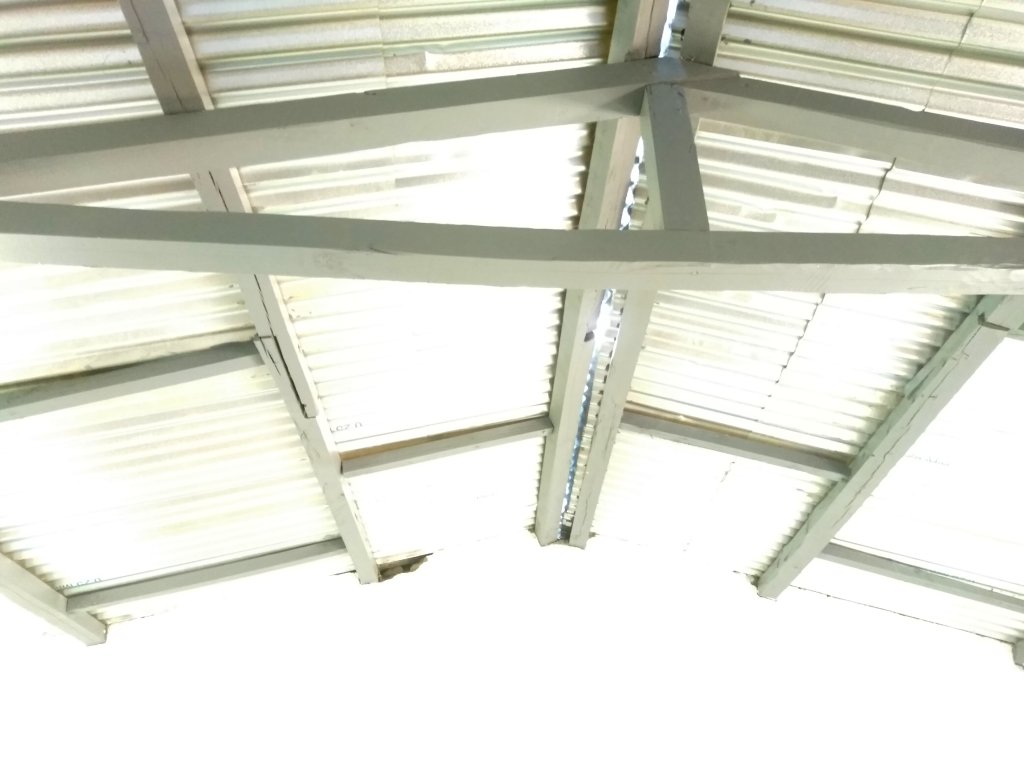
© Helpsimus
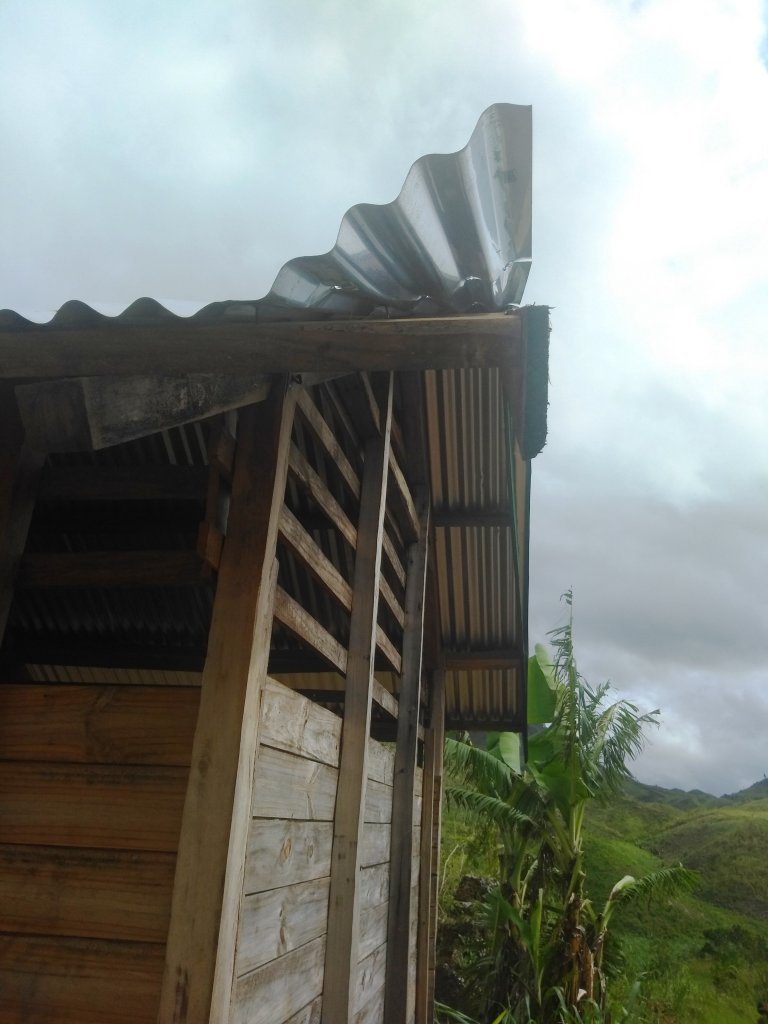
© Helpsimus
In Ambodigoavy :
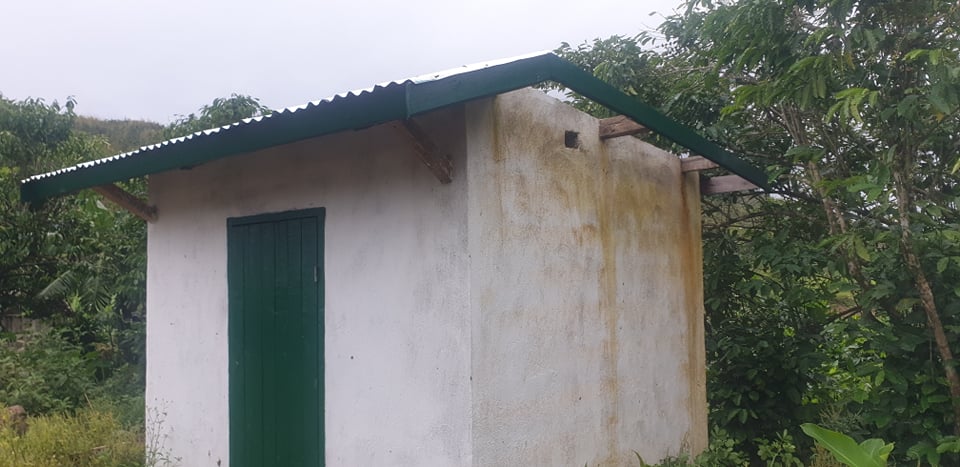
© Helpsimus
Significant damage was also observed in the schools of Sahofika and Ambodigoavy on buildings that were not built by Helpsimus:
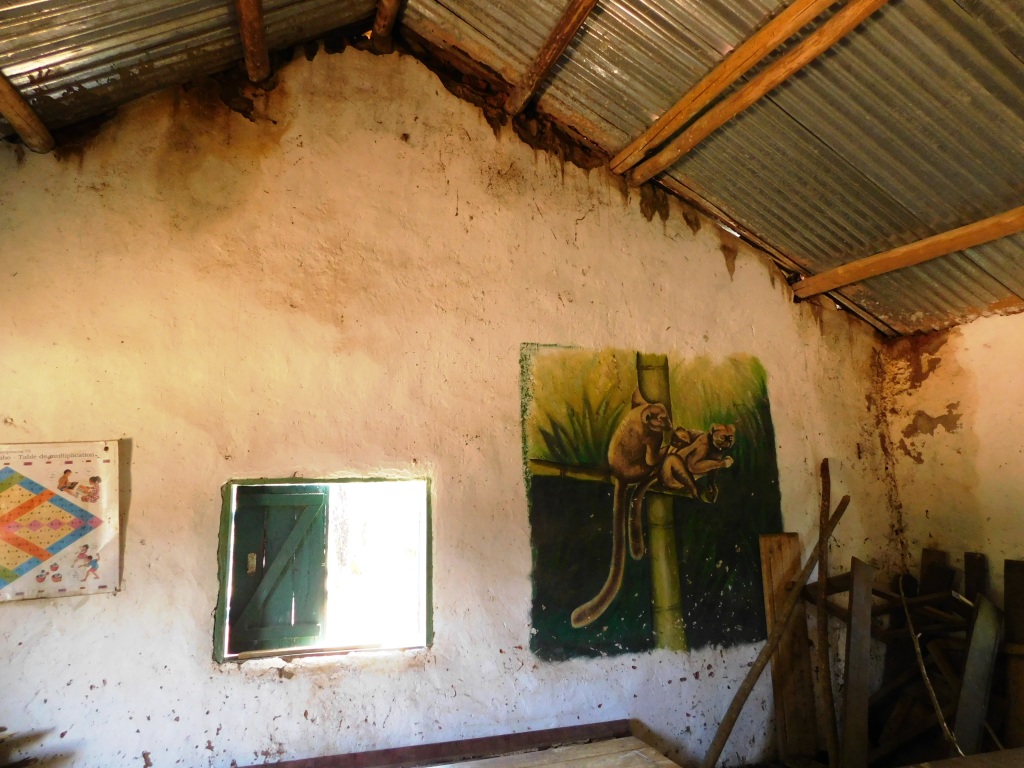
© Helpsimus
On February 22, a second cyclone crossed the Vatovavy region: fortunately, the cyclone Emnati did not significantly increase the toll of the cyclone Batsirai.
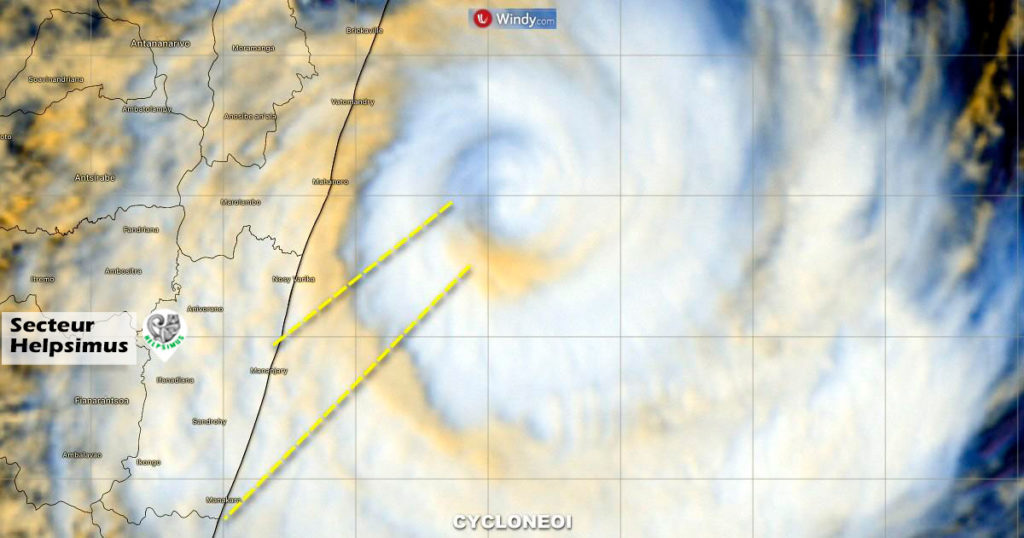
Cyclone Emnati © Cycloneoi.com & Windy.com
We will not be able to protect the lemurs and their habitat without strengthening support for local populations and guaranteeing them a minimum of food security.
We have been able to start several of the activities described in the action plan thanks to the support already obtained from several donors whom we thank warmly.
The population of Greater Bamboo lemurs that we protect lives in a very degraded and highly anthropized environment made up of agricultural land, bamboo forests and small portions of residual forests.
When the VOIs (village associations) were created, ecotourism was identified as a means of promoting biodiversity and developing the local economy.
Thus, since 2018, we have been developing an ecotourism project in one of the forest fragments of Sahofika on the territory of the Group 5 of Greater Bamboo lemurs.
This forest fragment depends on the VOI SAMIVAR and borders the access road to the village of Sahofika. It is located about ten km from the town of Ifanadiana.
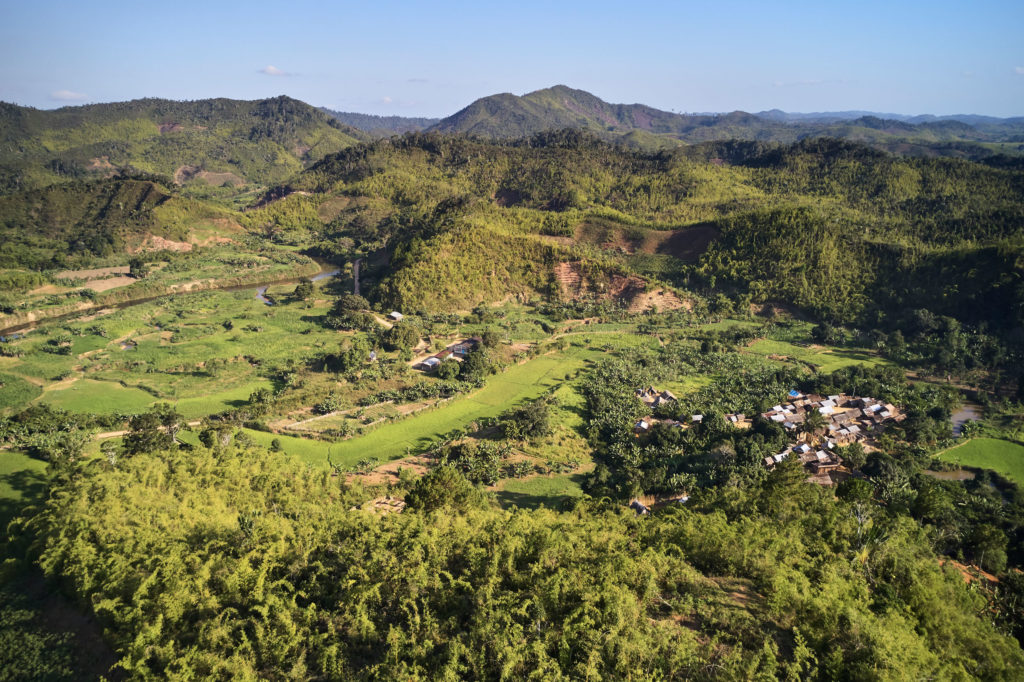
The Group 5 is composed of more than sixty Greater Bamboo lemurs and shares its territory with a family of Red-bellied lemurs whose habituation has begun in 2018.
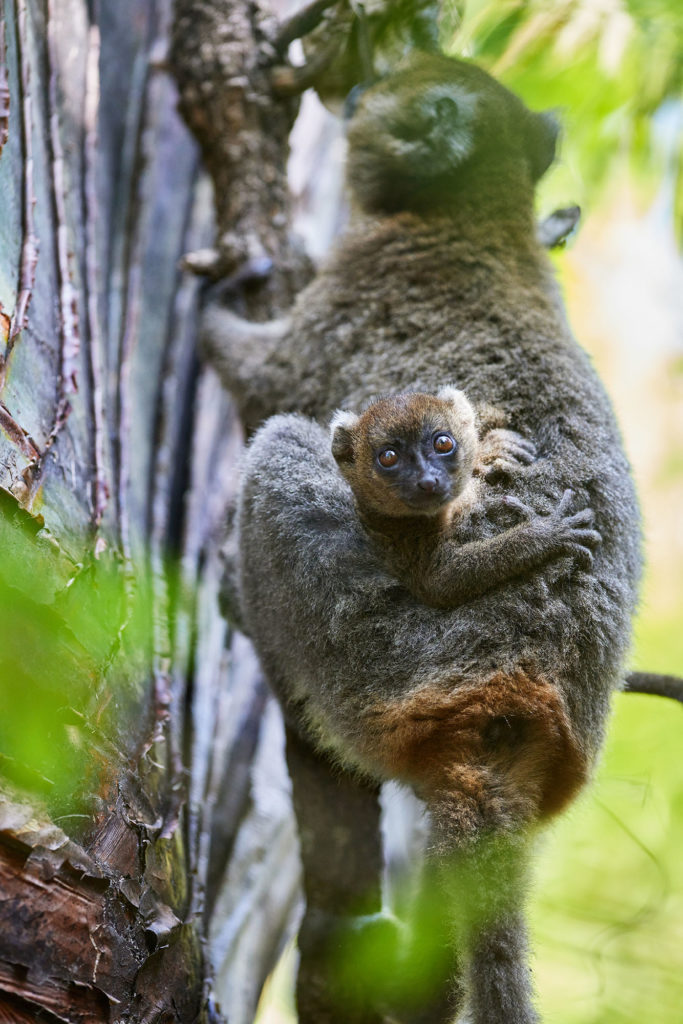
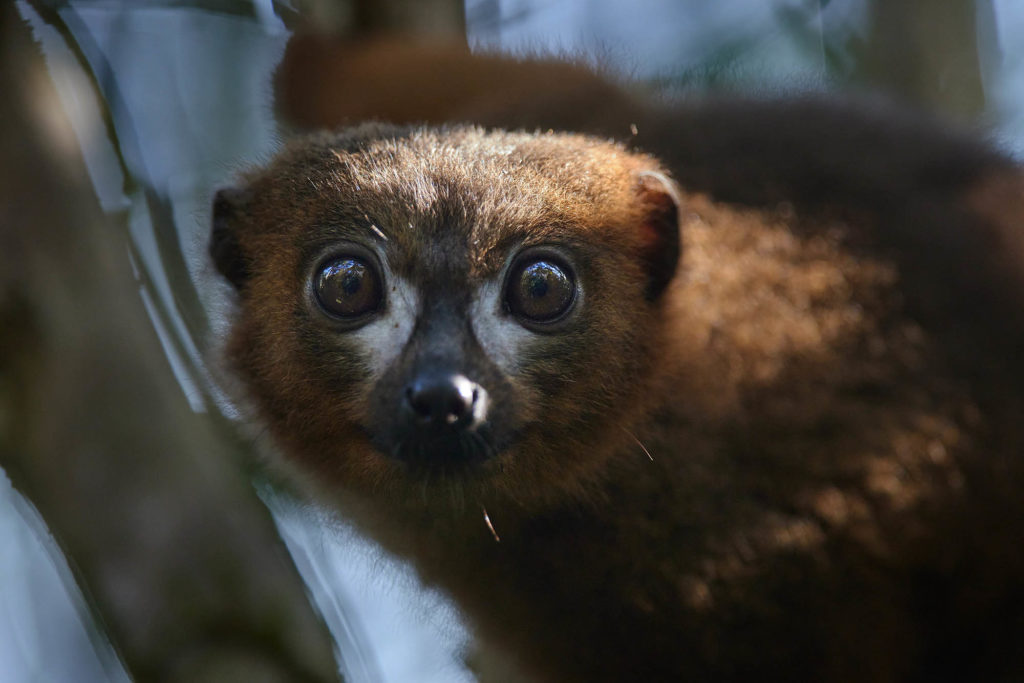
Red-bellied Lemur © S. Meys
A floristic inventory showed that the forest fragment is home to several precious wood species such as Dalbergia baroni (rosewood) as well as endemic species from Madagascar (Ravenala madagascariensis).
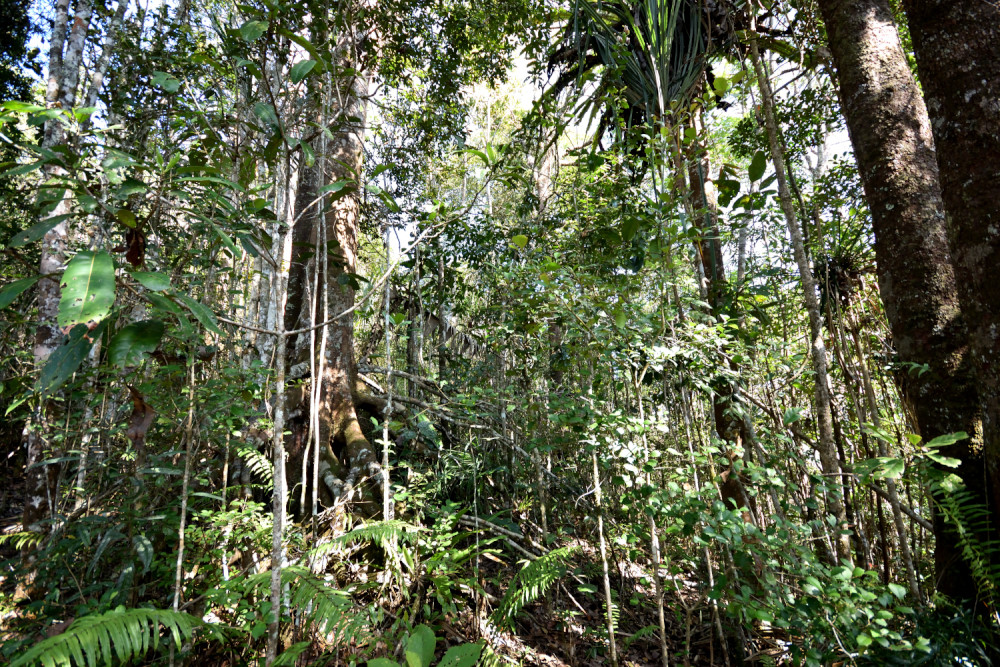
Forest of Sahofika © D.Roullet
The fauna inventories that are still in progress have confirmed the presence of many animal species: Mouse lemurs (Microcebus spp.), Dwarf lemurs (Cheirogaleus spp.), Ring-tailed mongoose (Galidia elegans), forest rats (several species), Blue coua (Coua caerulea), Reynaud’s coua (Coua reynaudii), Madagascar long-eared owl (Asio Madagascariensis) etc.
In October 2019, we hired two women and one man among the members of the VOI SAMIVAR to become tourist guides. Their training, initially designed to last three years, has been extended until 2022 due to the successive lockdowns related to the Covid-19 pandemic. Indeed, out of the 3 traineeships initially planned, the tourist guides have only been able to complete one in Ranomafana National Park for the moment.
However, since their recruitment, the tourist guides have been participating in animal monitoring alongside Helpsimus agents which has enabled them to acquire a good knowledge of the flora and fauna present in the Sahofika forest fragment.
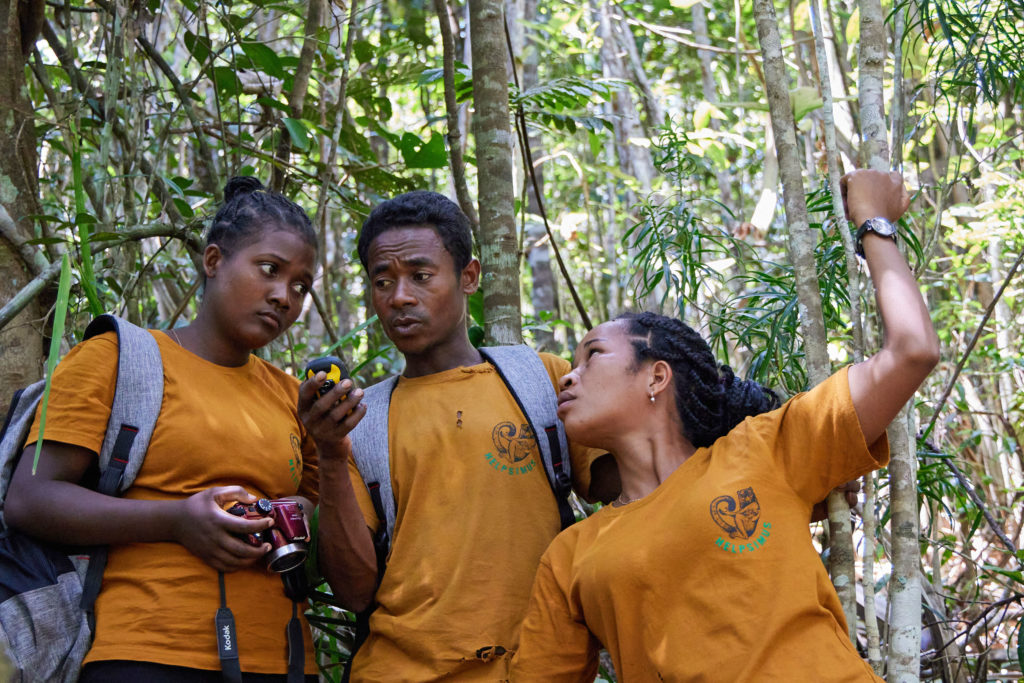
Francine, Charles and Lova, the tourist guides © S. Meys
In addition, since 2020 they have overseen the habituation of a female owl spotted in 2017 in Sahofika.
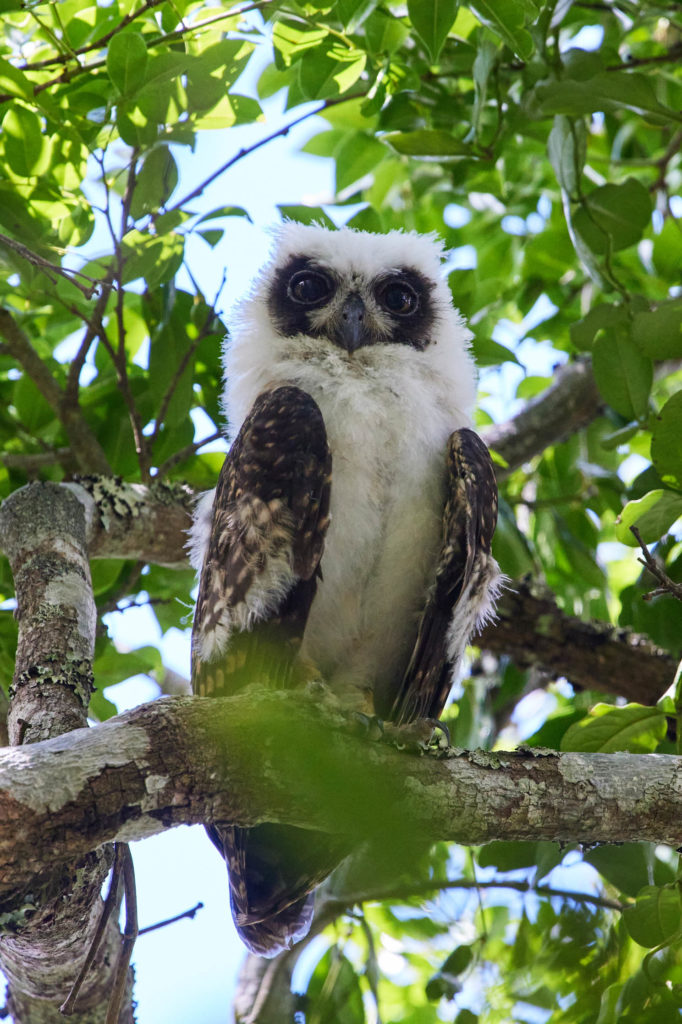
Young owl © S. Meys
Some paths have been set up in the forest to facilitate the visit. We also built a reception office at the forest entrance with a parking lot by the road side, allowing the visitors to park as close as possible to the reception office.
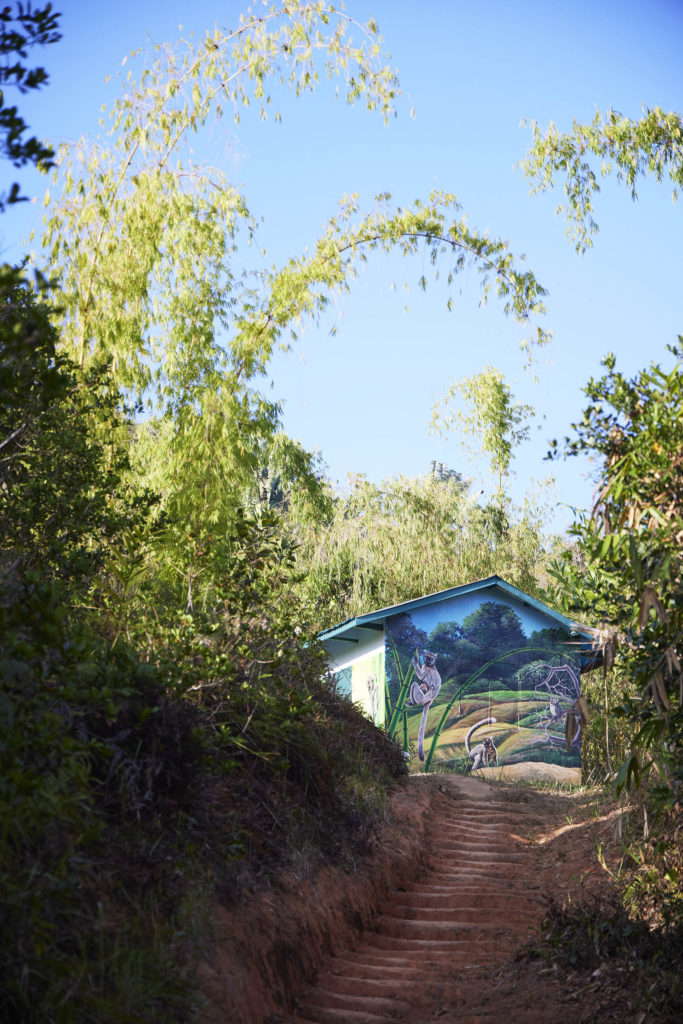
The entrance to the Sahofika forest © S. Meys
Same-day visits can be organized from Ranomafana.
While this ecotourism project aims to create additional income for local communities, its main objective is to bring value to the natural resources in an area where human activities are very intense.
The presence of ecotourists who will make a long journey to reach Sahofika and visit this forest to observe the local wildlife will help raising awareness among communities regarding the richness of their biodiversity.
The ecotourists, whose number will be limited (access to the site remains rather difficult), will live a unique experience by observing one of the world’s most endangered lemurs in exceptional conditions.
With this project, we wish not only to involve local communities in the long term preservation of their biodiversity but also inspire ecotourists among whom we hope to arouse a desire in getting involved.
In parallel to the visit to the Sahofika forest, we are developing 3 completely new craft projects in our partner villages:
– Job’s tears jewels
A French jewellery designer has created a bracelet and earrings with seeds from a plant called « Job’s tears » which grows wild in our area of intervention.
She came to our study area in Madagascar where she trained a dozen women in manufacturing these jewels which will be sold in Europe under the label she has created and help generating sustainable income for women.
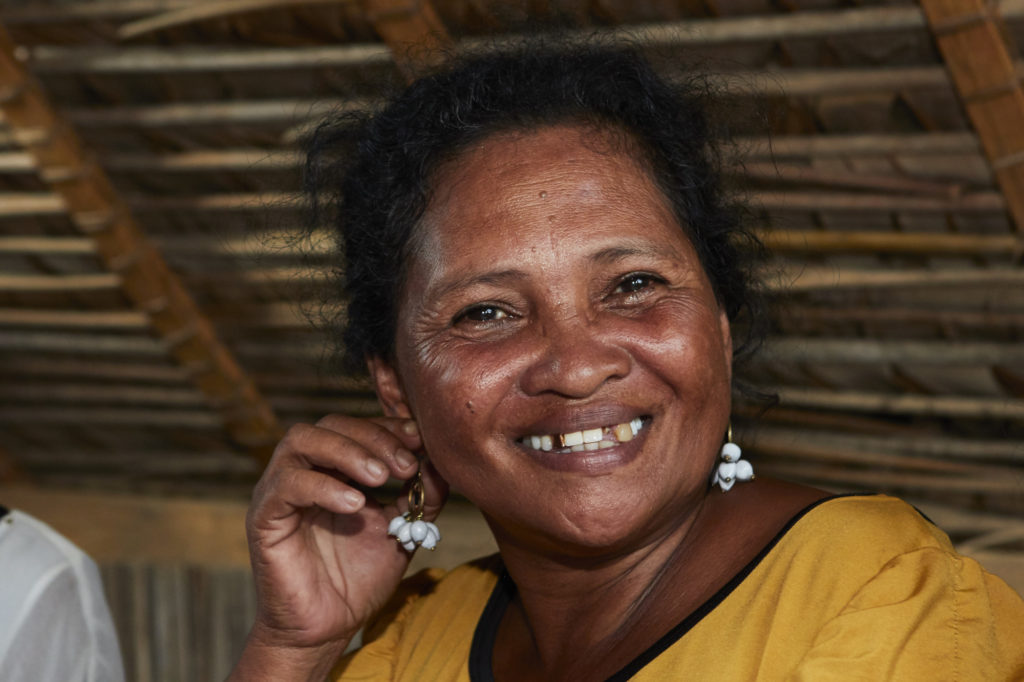
Some women also make the small raffia boxes in which the jewels are presented.
– Sculptures in dead wood
This project was born from an encounter in Sahofika with a young man from the village who carved wooden animals. He requested our support to help him acquire suitable tools and improve his sculpting technique.
In the end, 3 persons benefited from the training with a Malagasy professional sculptor whose particularity is to create sculptures only from pieces of dead wood picked up on the ground.
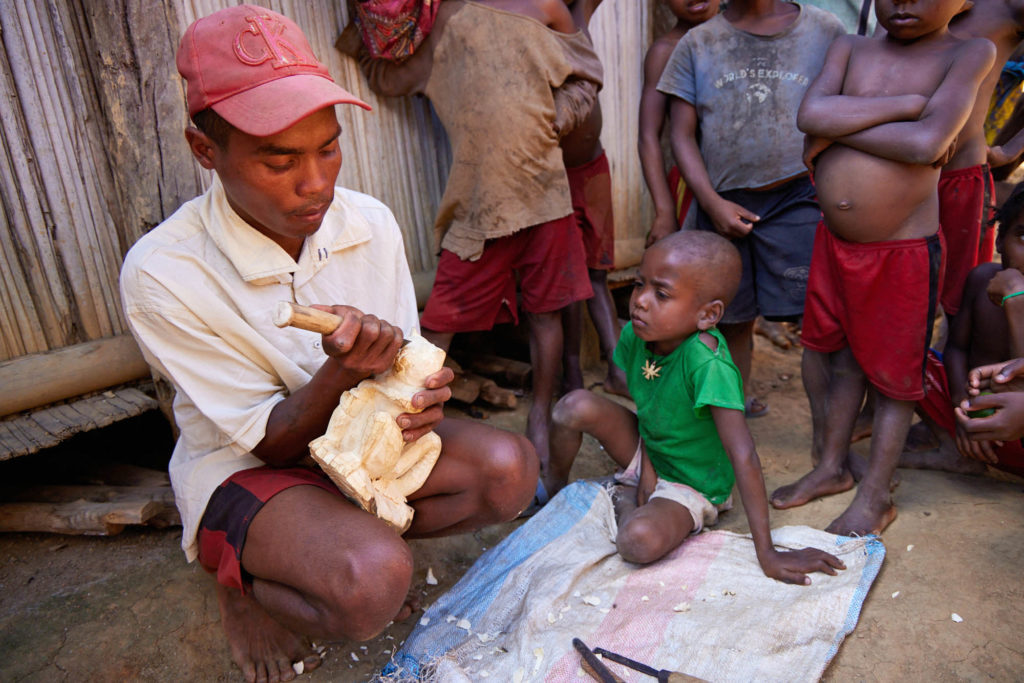
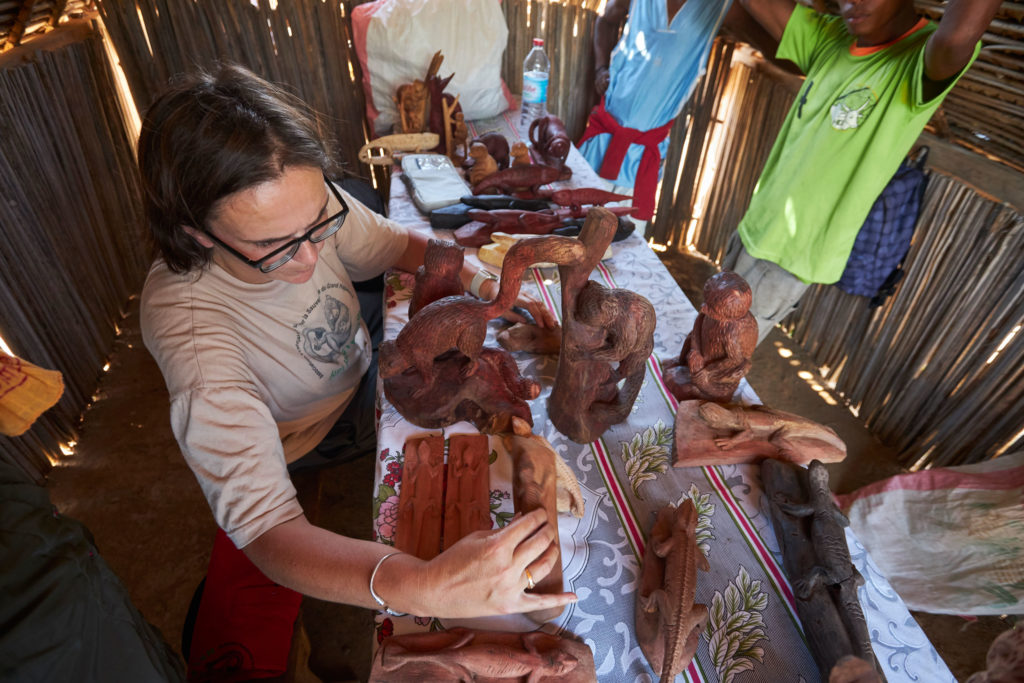
– The embroidery project
This project was initiated in collaboration with an embroiderer from Ranomafana.
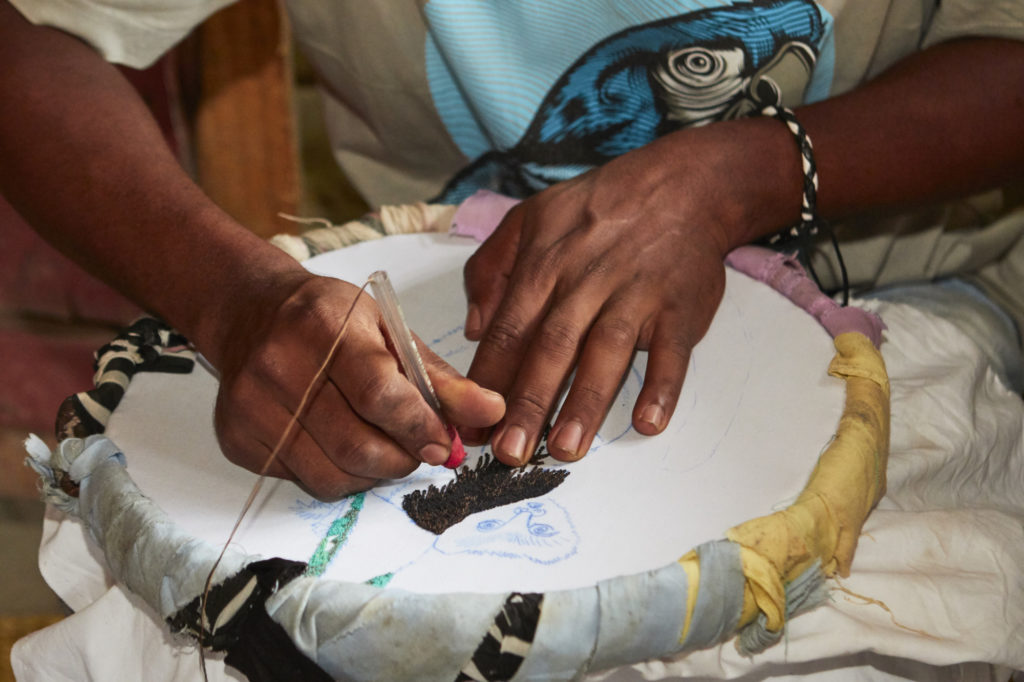
wo women from the village of Ambodigoavy who wanted to start a similar activity were invited to participate in this project.
Their training has been suspended by the pandemic but has not, however, been completely interrupted.
The original project which aimed to make embroidered bags has indeed been temporarily reoriented towards the manufacture of cloths masks as part of the fight against the spread of the coronavirus.
The women were thus able to familiarize themselves with the use of their sewing machine. In addition, they are currently trained in the manufacture of cloth sanitary napkins. These additional activities should allow them not to be completely dependent on ecotourism eventually.
Except jewellery, handicrafts will be sold in a shop we have built at the entrance to Ranomafana national park.
This local will make it easier for artisans to sell their products by offering them directly to tourists visiting the national park. We also plan to sell other items, in particular raffia objects made by a few women from our partner villages.
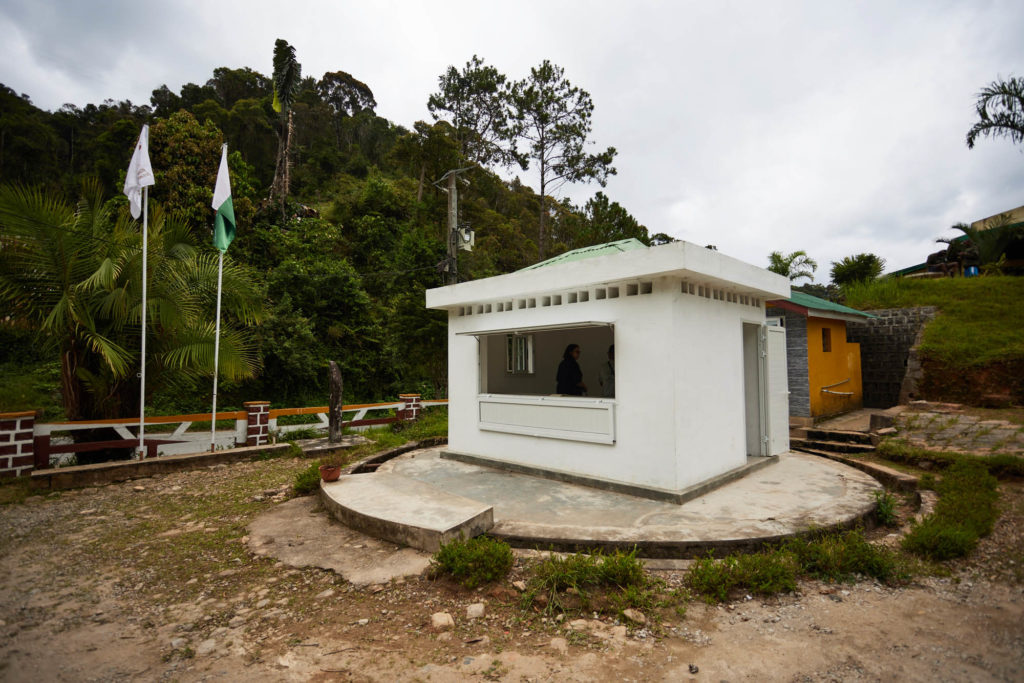
Helpsimus shop at Ranomafana© S. Meys
The implementation of these various projects has unfortunately been greatly slowed down by the health crisis. However, this imposed delay has benefited their maturation.
The Sahofika forest fragment should be open to the visitors in 2022, as will the shop located at the entrance of the national park.
This project is co-funded by IUCN Save Our Species. The contents of this article are the sole responsibility of Helpsimus and do not necessarily reflect the views of IUCN.
In November, we opened 3 new school canteens in Ambohipo, Ambodimanga and Vohitrarivo schools.
Every canteen has an equipped kitchen (with improved furnaces, cooking pots, cooking utensils, plates, cutlery, cups, etc.) and an attic for storing foodstuffs.

The kitchen at the right of the 2 school buildings – Ambohipo school © D. Roullet
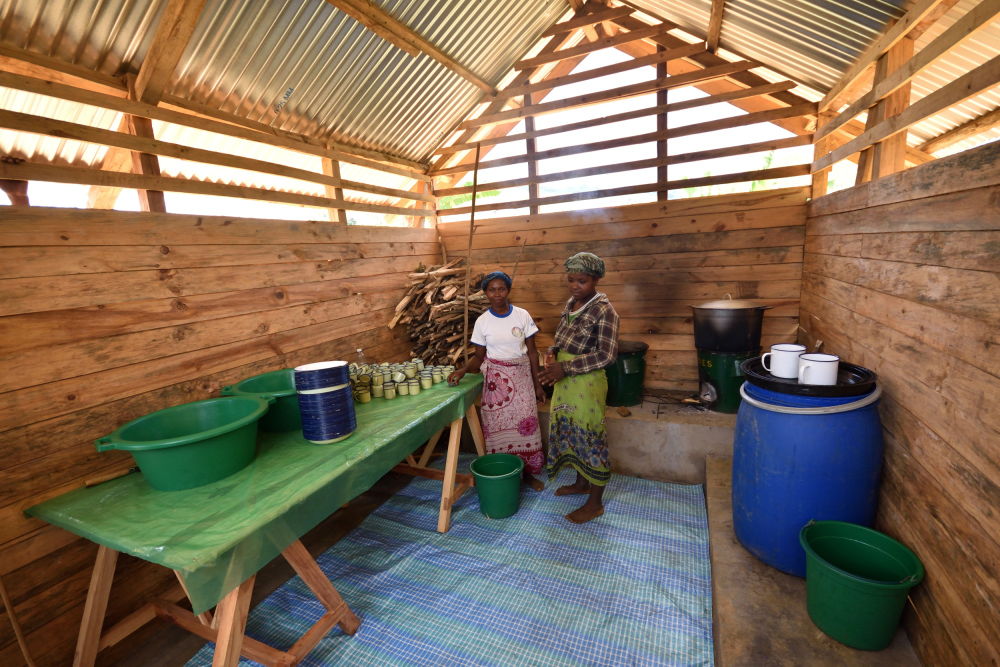
The kitchen at Ambohipo © D. Roullet
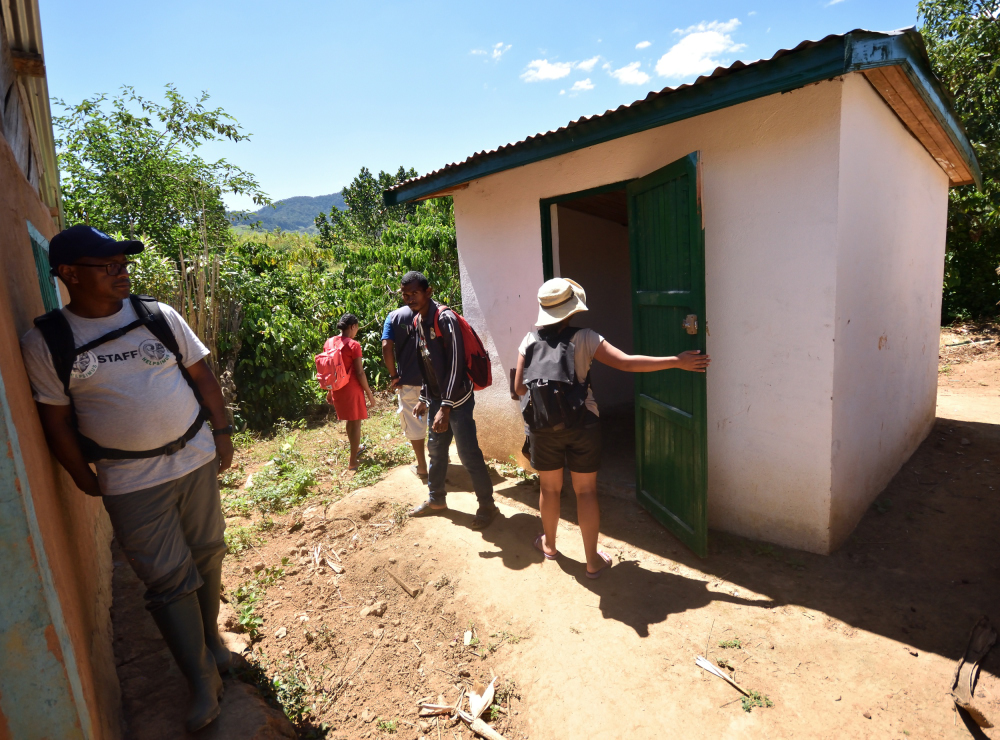
The storage attic at Ambohipo © D. Roullet
A big thank you to Bel Foundation which funded the creation of these 3 new school canteens.
Every school of the program now has a school canteen. The 5 school canteens directly benefit 662 children and their 22 teachers.
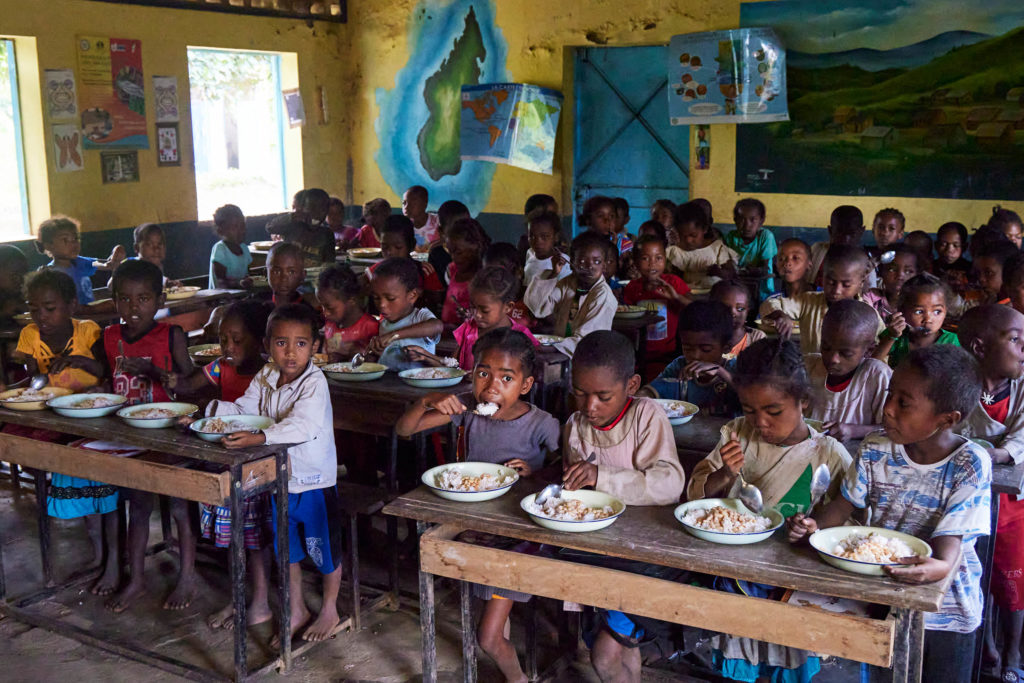
Sahofika school © S.Meys
The canteens are handled by a manager whom we recruited when the 3 new canteens opened. This manager is member of the NGO Impact Madagascar, our local partner on various development aid projects: management of school gardens, stock management, preparation of menus, training of cooks, etc.
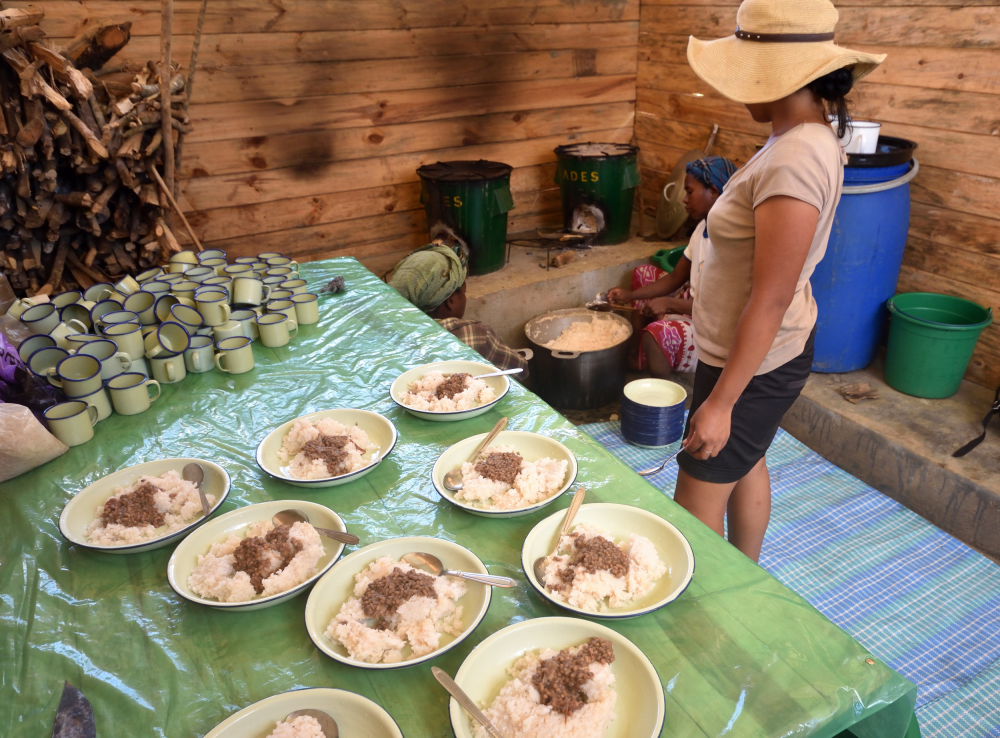
Preparation of the meals under Mialy’s control who handdle the school canteens © D. Roullet
Note that the 5 school gardens, which were set up in every school, produced just over 10% of the accompaniments (mainly vegetables) from the opening of the canteens until the Christmas holidays.
The children’s meal is made up of rice supplemented each day with a different food such as green beans, carrots, beans, zucchini, potatoes, Cape peas, pasta, petsai (Chinese cabbage), lentils, fish, yams,bravimboatavo (eatable leaves), etc.
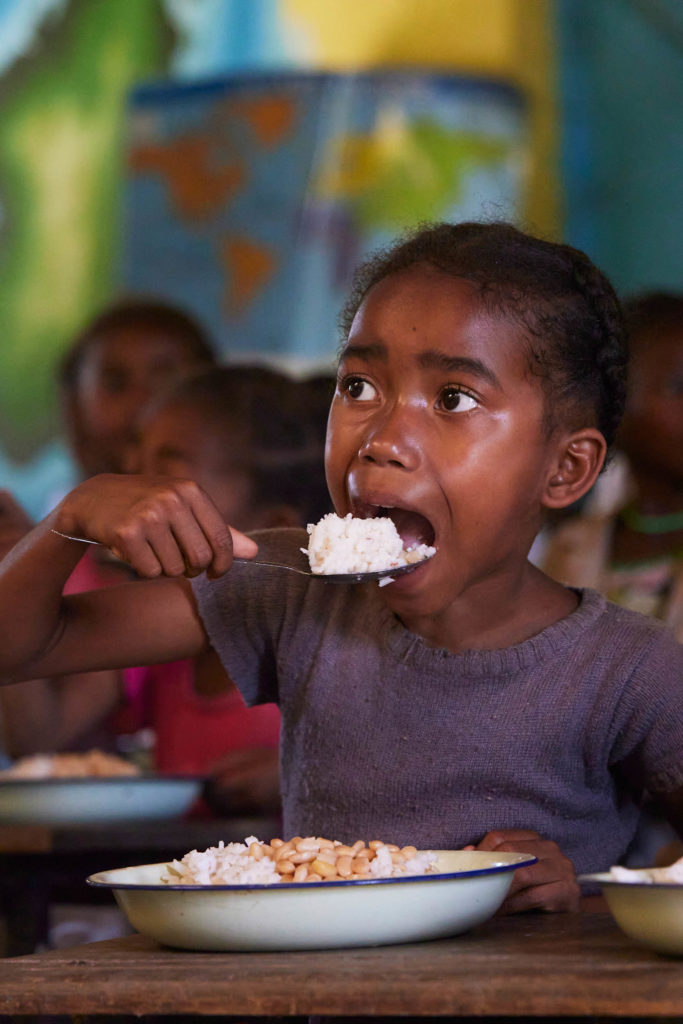
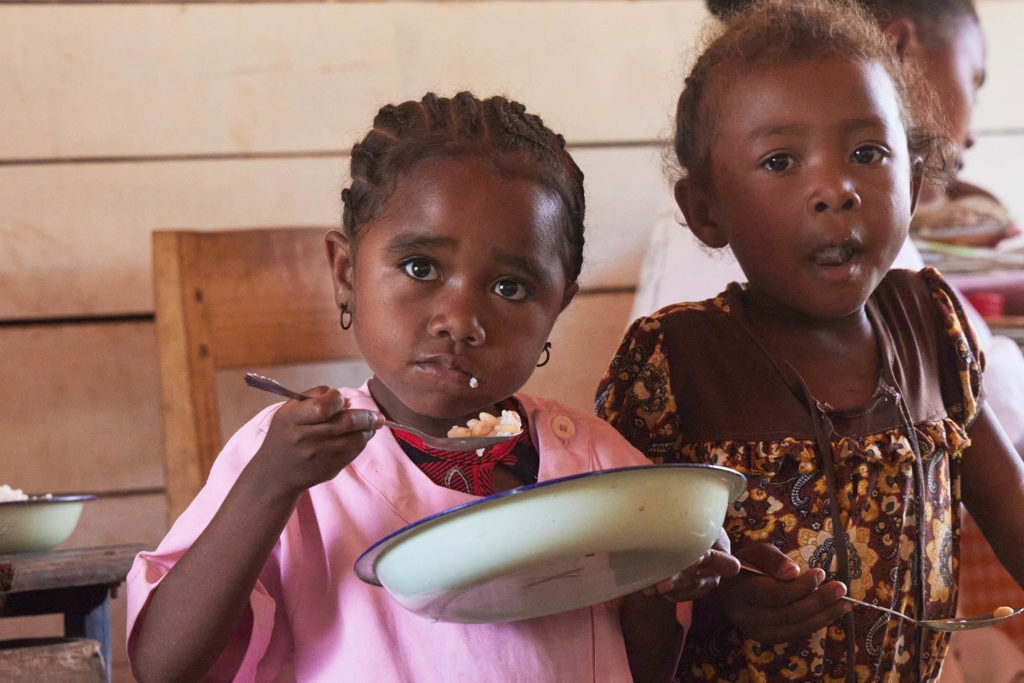
The children have access to a more varied diet in the canteen than at home, where they consume virtually no vegetables. In addition, many of them eat little in the morning for breakfast (mainly cassava), especially during the lean season.
However, we will be working in the coming weeks to improve the canteen menu, which is is not yet sufficiently balanced.
The school canteens will contribute to the long-term protection of the greater bamboo lemurs:
– by keeping children in school: they will acquire a better basic education and once adults, they will be able to better manage their natural resources.
– by generating new sources of income for local populations: job creation (gardeners for school gardens, cooks for preparing meals, etc.) and purchasing foodstuffs from local producers who benefit from our agricultural program (in progress).
The site of the Bamboo Lemur program is divided into 3 sectors now managed by 3 VOI or village associations that we have helped to set up: the VOI Miaradia, Samivar and Manirisoa.
The VOI Miaradia was created in 2018. Its area of intervention covers the territory of several groups of greater bamboo lemurs: Groups I, I ‘, I « , II, II’, III and IV.
Several groups of greater bamboo lemurs have extended their territory both outside the conservation and restoration zones defined by the management plan but also outside the limits of the VOI intervention zone.
After the evaluation of the first 3 years of management of the VOI (Evaluation du VOI Miaradia | Helpsimus), its management plan has been updated.
This involved increasing the area of conservation and restoration areas located within the Miaradia sector in order to secure the new territories now frequented by lemurs.
To do this, new floristic and faunistic inventories have been carried out in order to define the new forest fragments to be included in the conservation and restoration zones of the VOI’s new management plan.
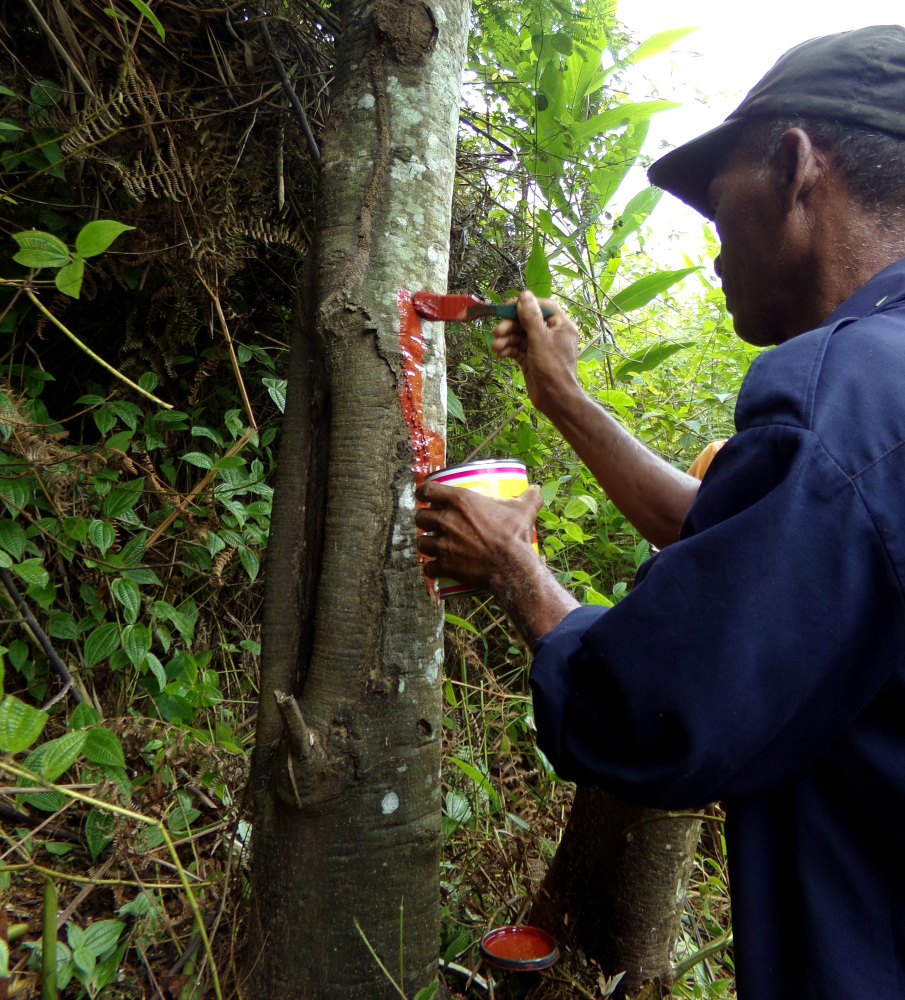
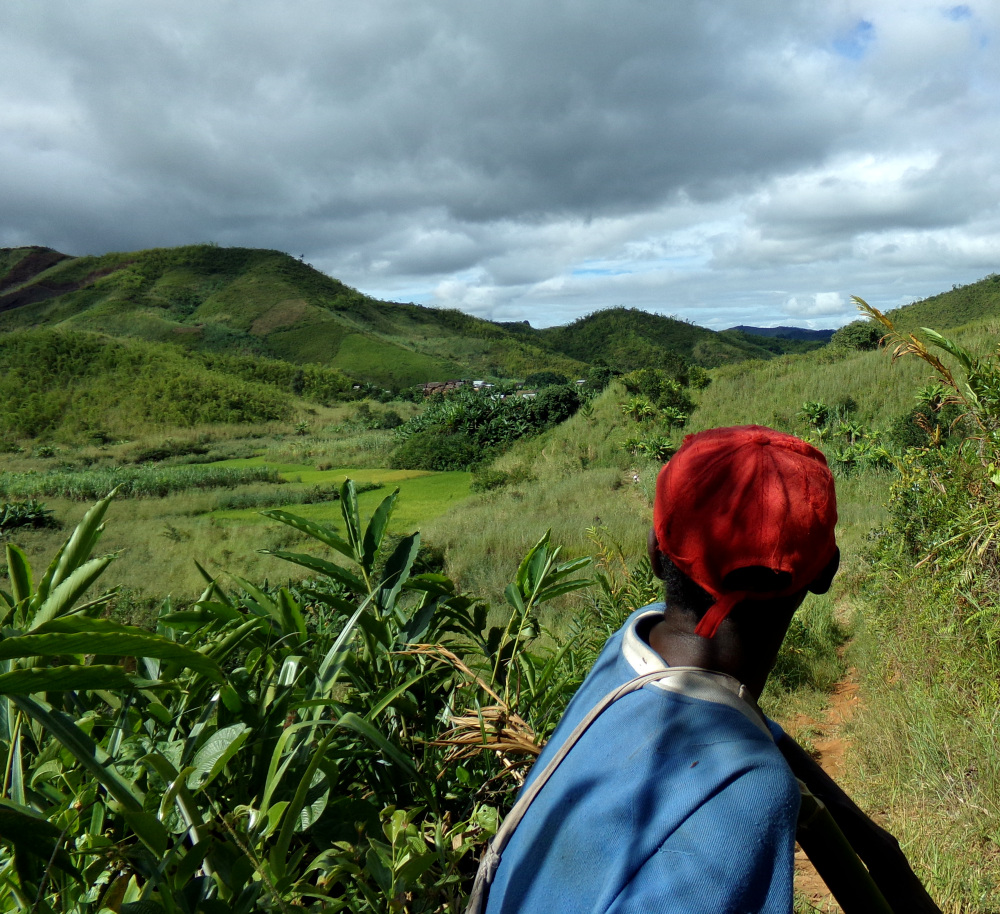
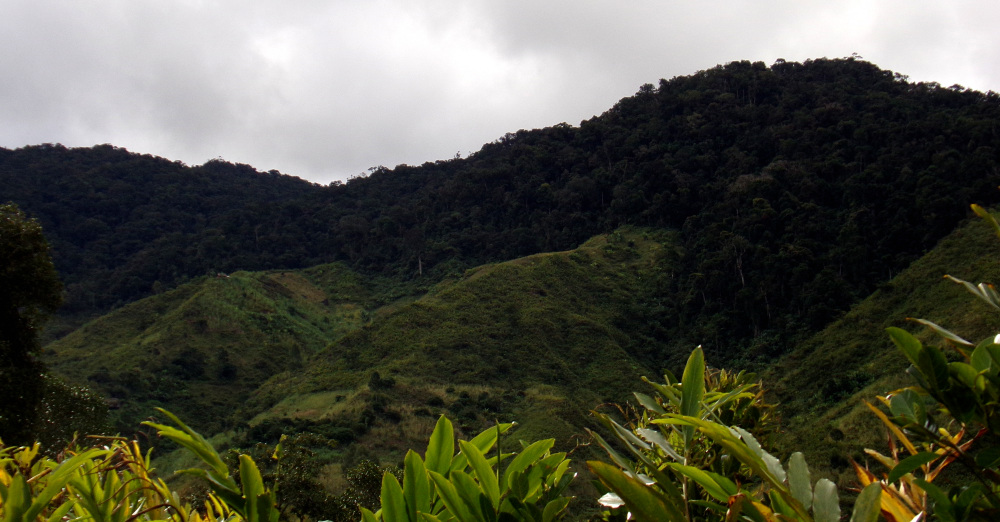
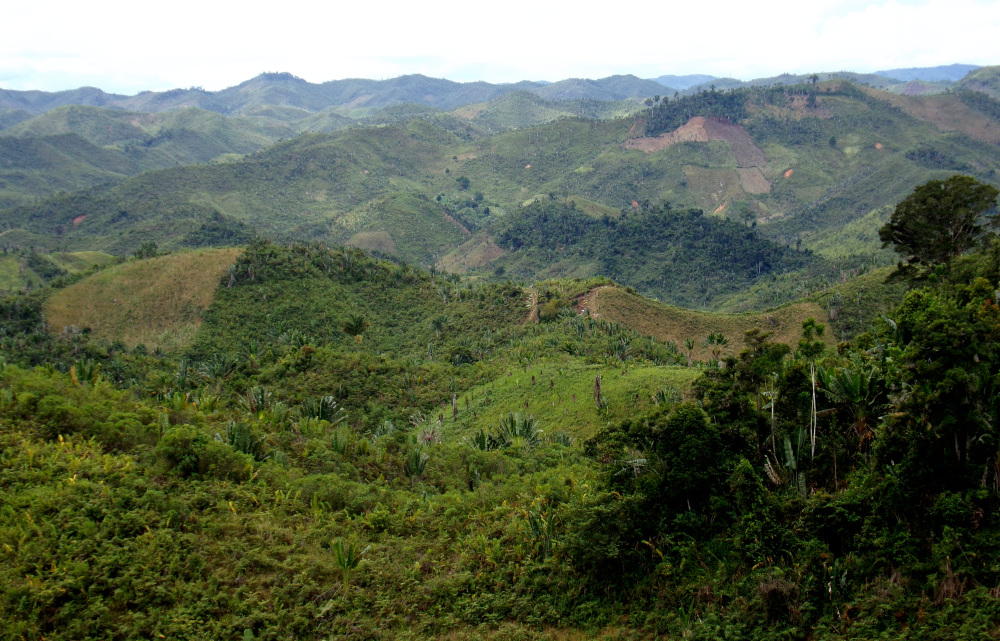
© Impact Madagascar
The new management plan was drawn up during several working meetings with stakeholders (VOI members, representatives of local authorities and of the national park, etc.).
These meetings were organized by our local partner Impact Madagascar, which we commissioned to monitor the VOI.
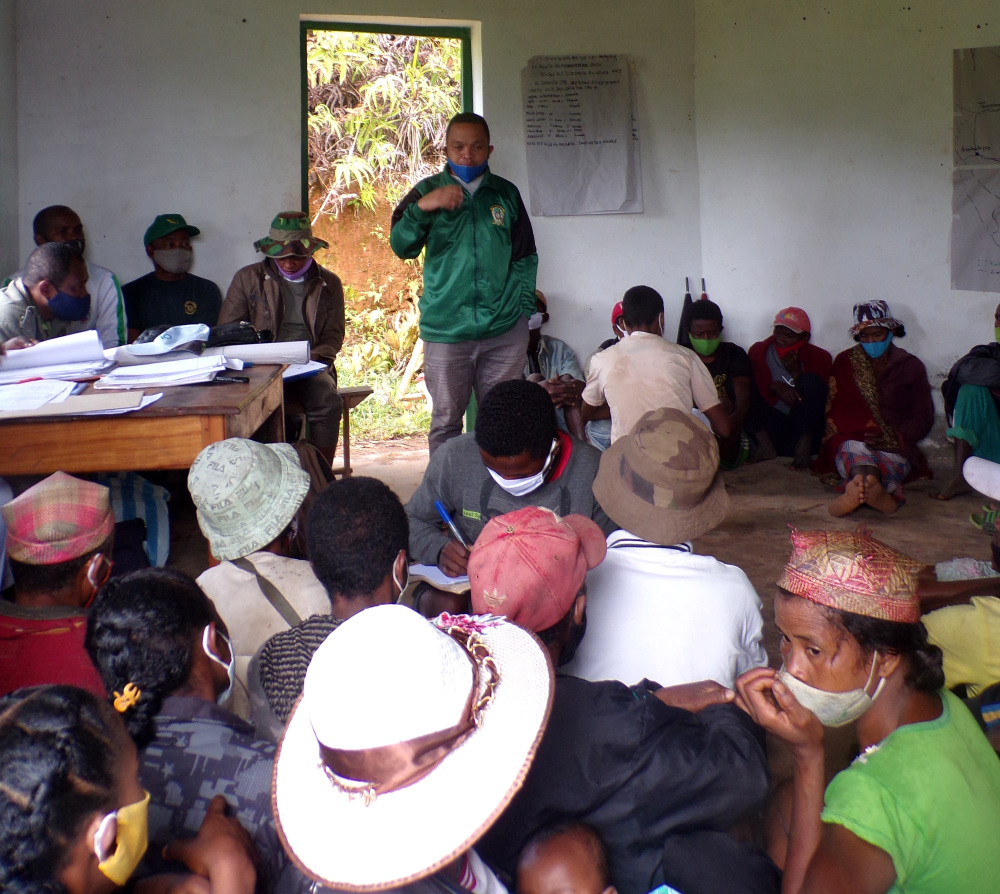

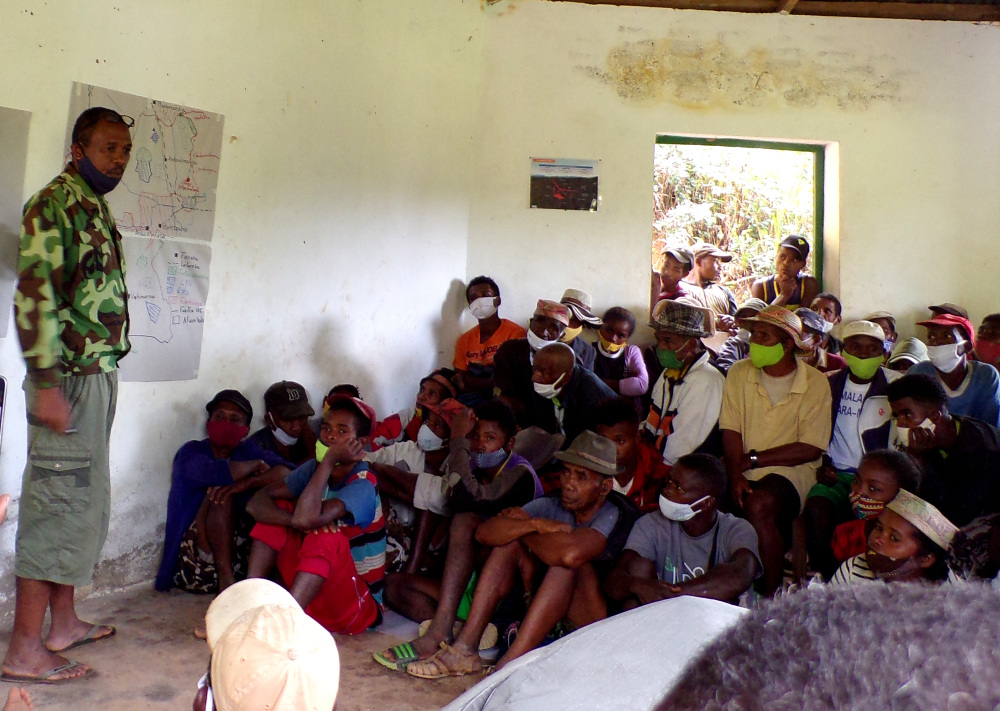
In the new management plan, the surface area of the VOI Miaradia intervention zone has almost doubled:
| VOI Miaradia | Total area | Conservation areas | Restoration areas |
| 1st management plan (2018) | 541 ha | env. 25 ha | env. 400 ha |
| 2nd management (2021) | 935 ha | env. 29 ha | 605 ha |
In addition, over 200 additional ha of forest have been integrated into the conservation and restoration areas.
Below is the new map of the Bamboo Lemur program intervention area: in green, the conservation areas and in pink, the restoration areas.

Site of the Bamboo Lemur Program – Helpsimus – Limits of the 3 VOI © Helpsimus
The new VOI Miaradia management plan makes it possible to secure the territory of more than 300 greater bamboo lemurs.
A big thank you to all the donors of the crowdfunding campaign « New territories for the greater bamboo lemurs »!
Next step: the evaluation of the first 3 years of management of the VOI Samivar (in progress) and the update of its management plan.